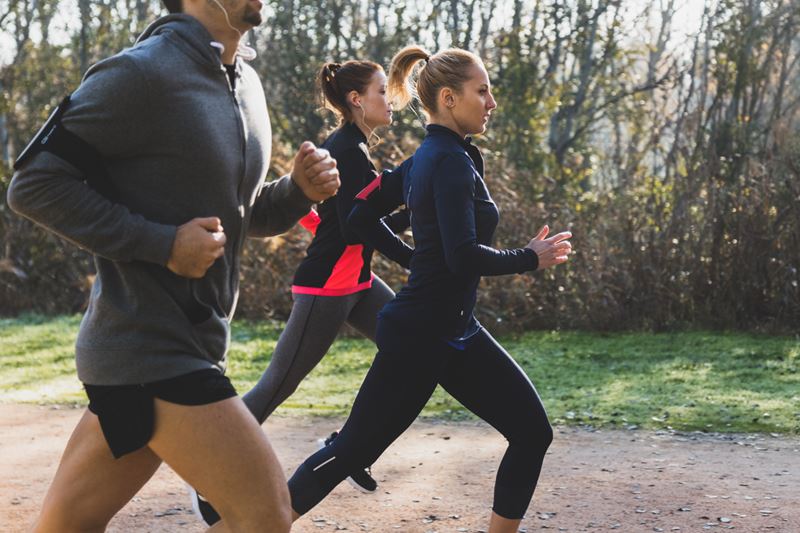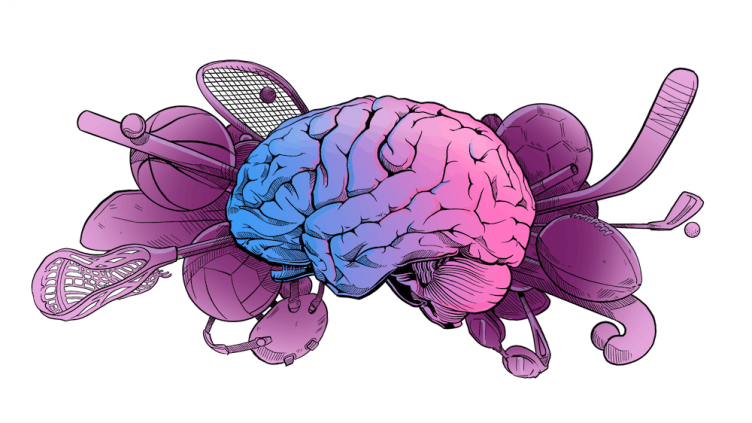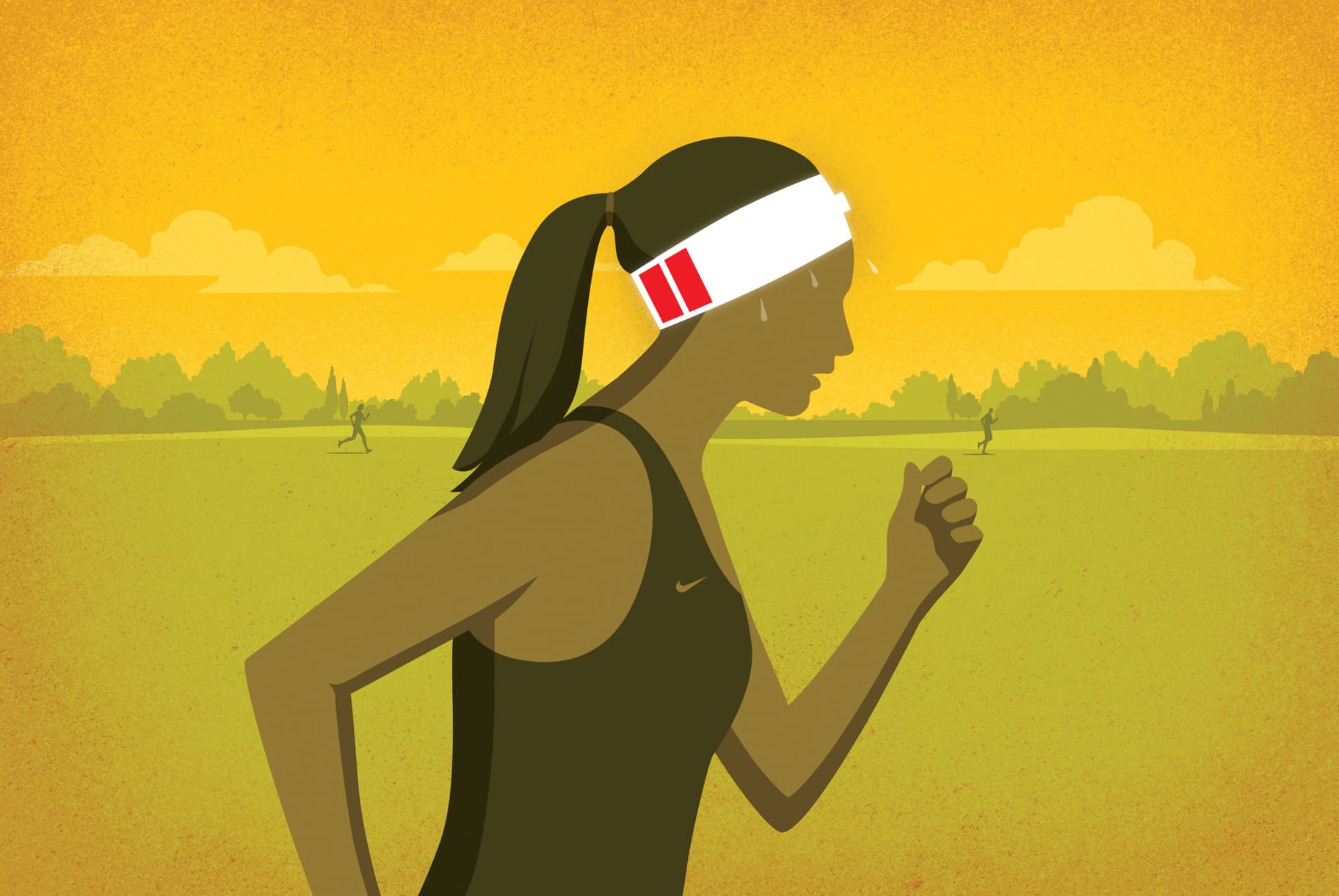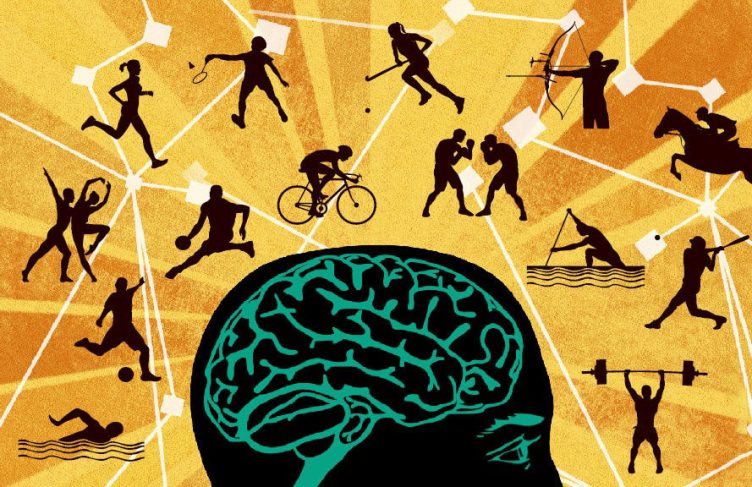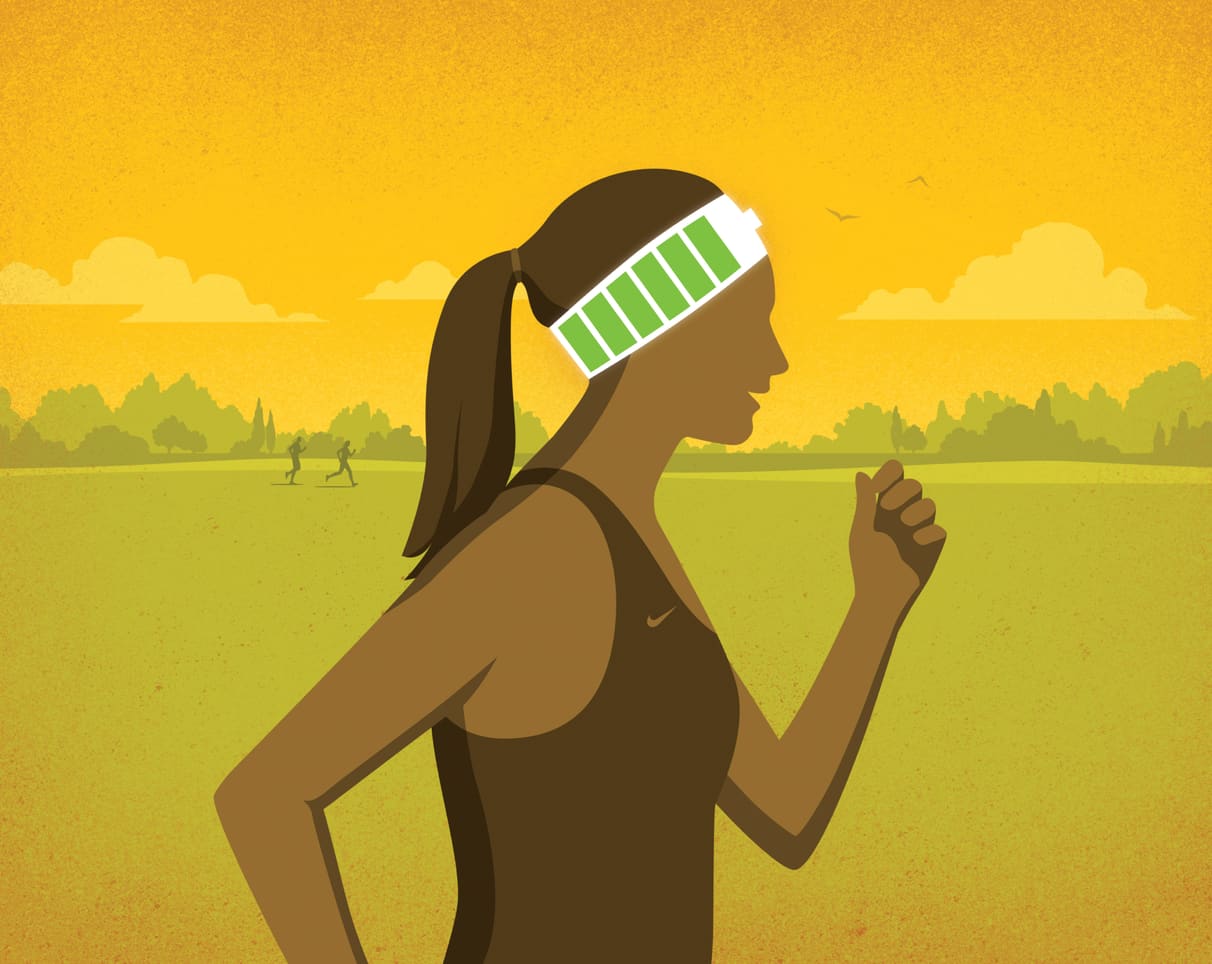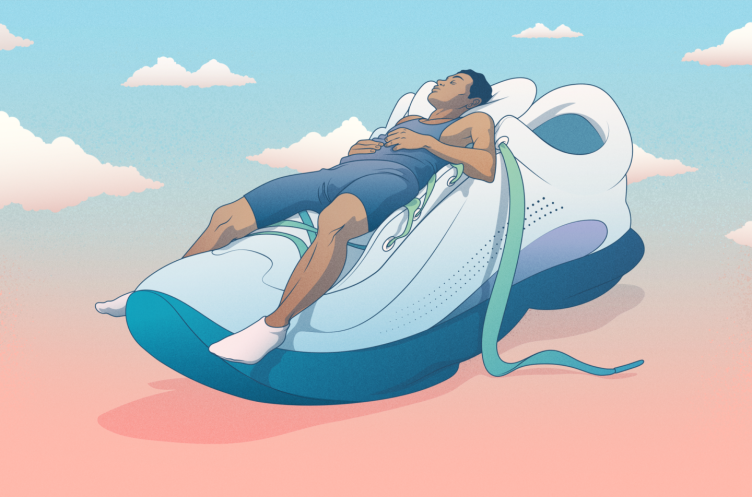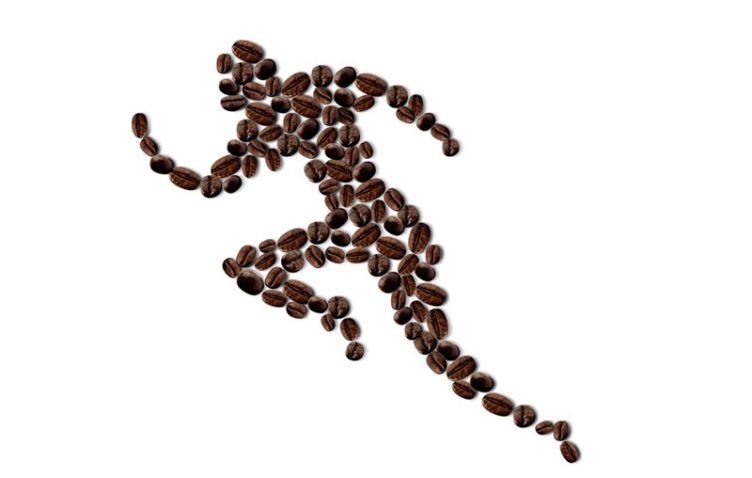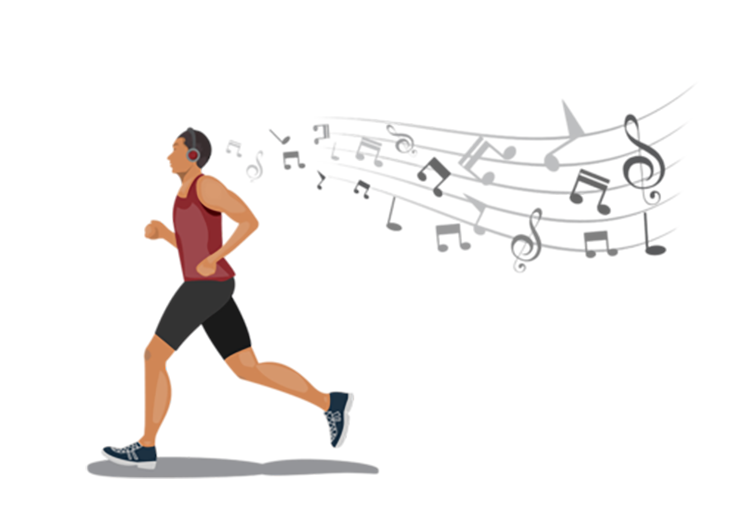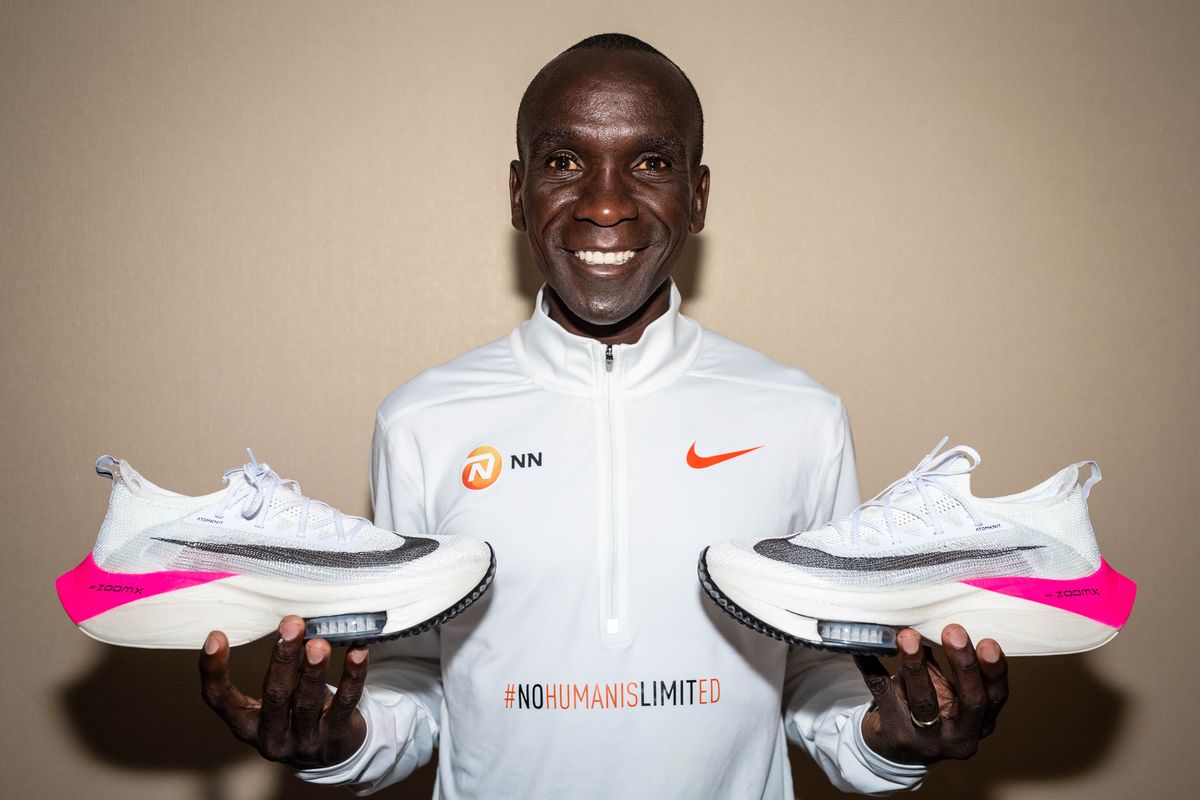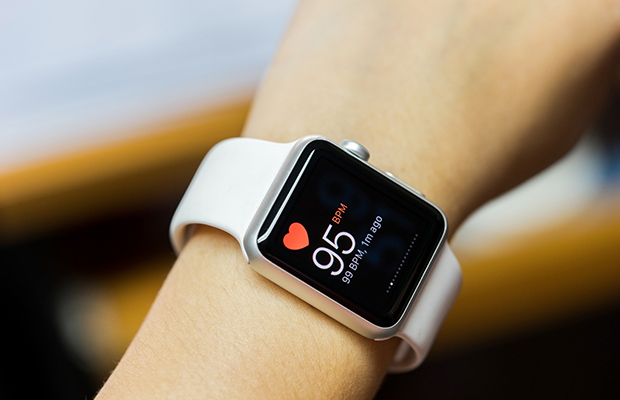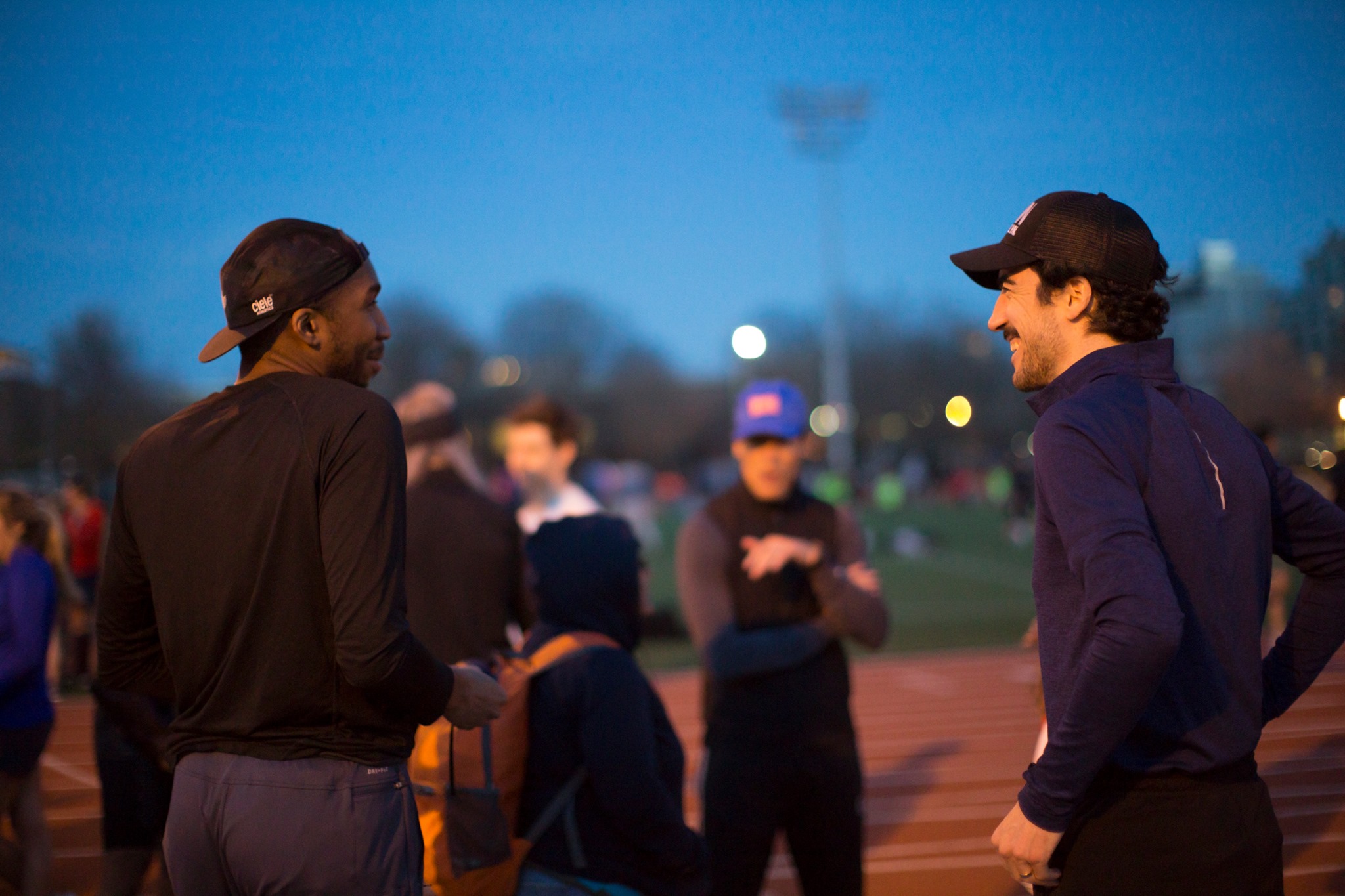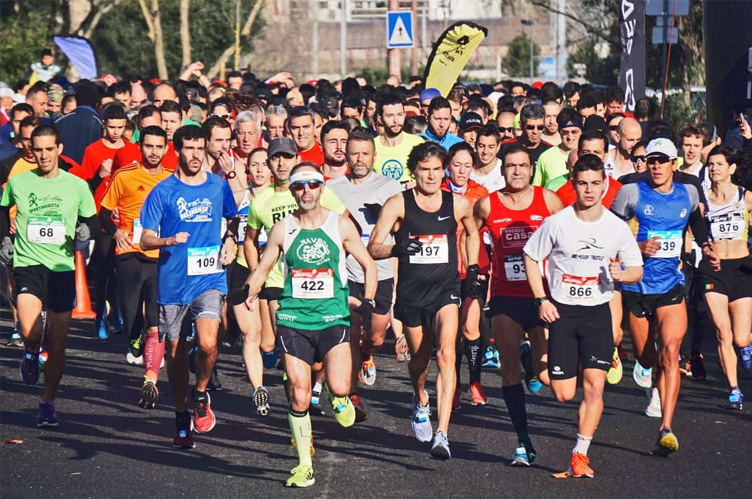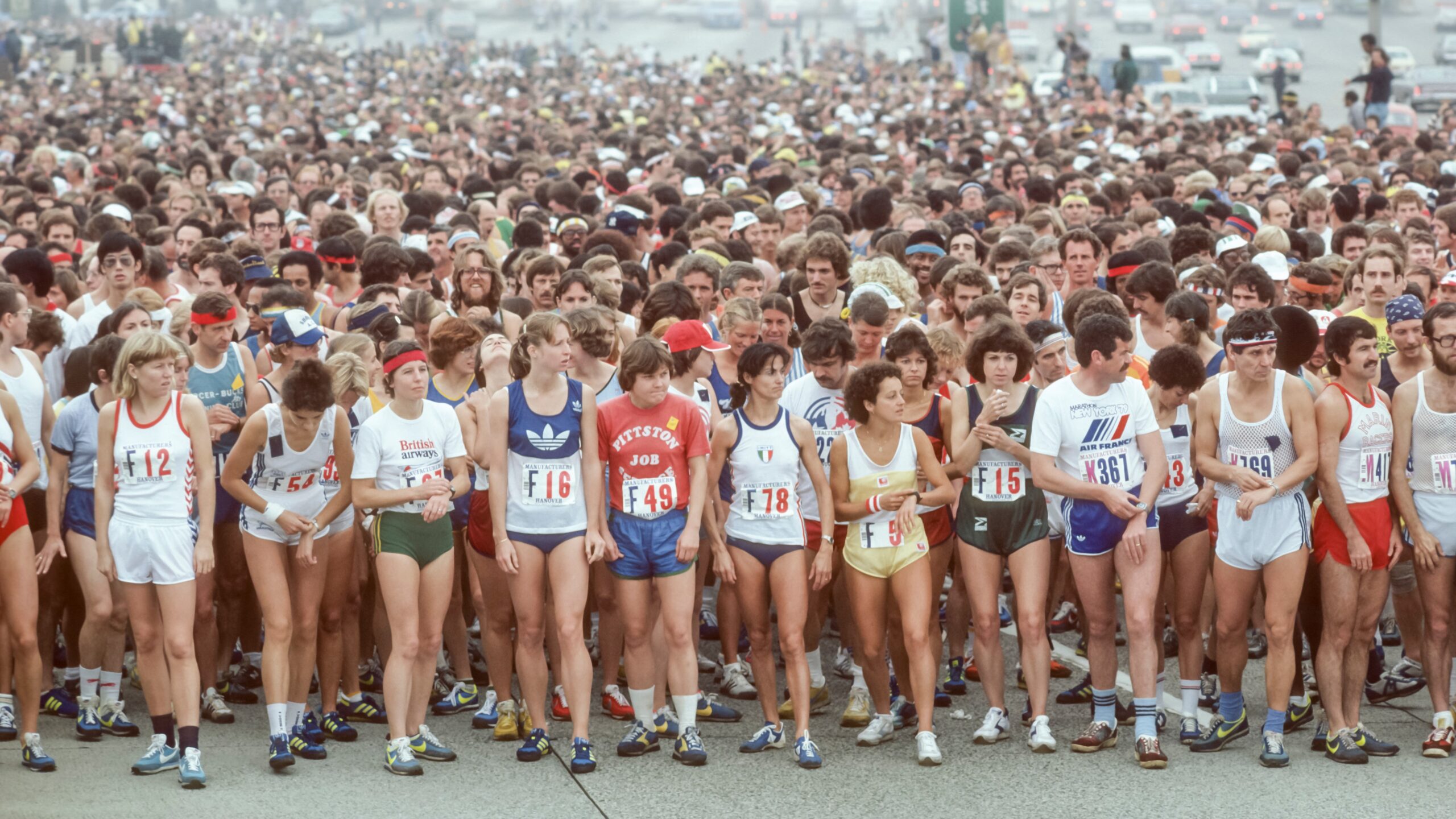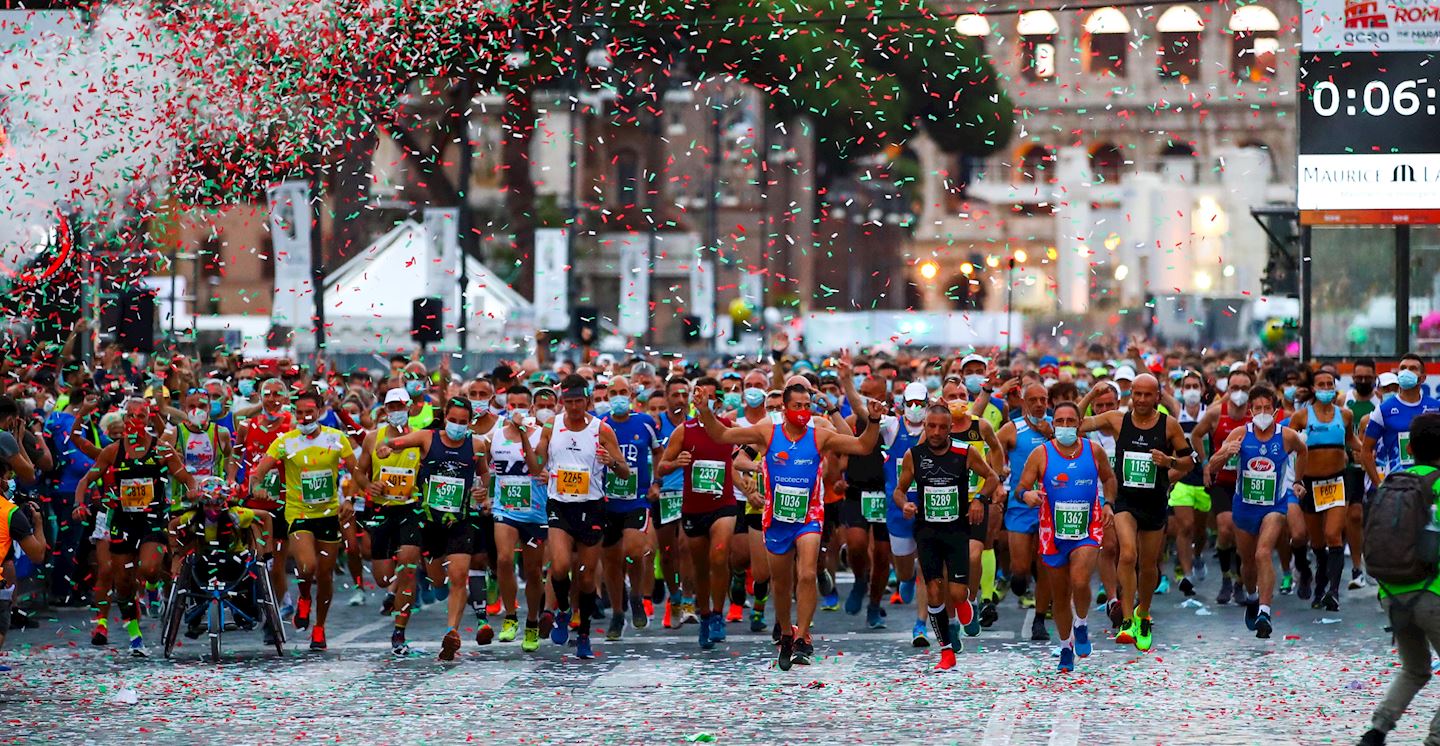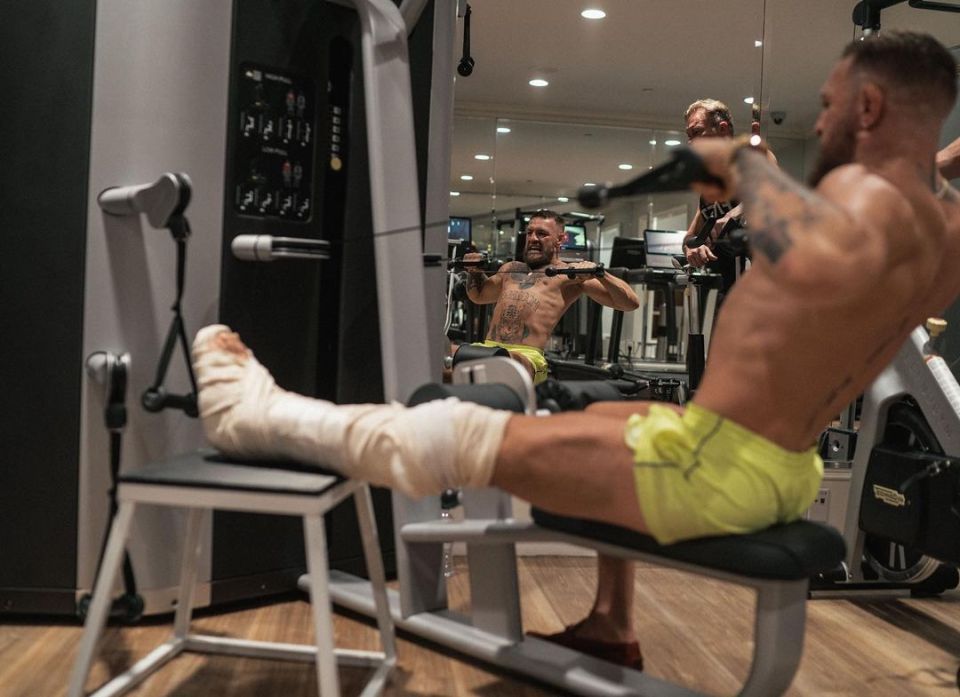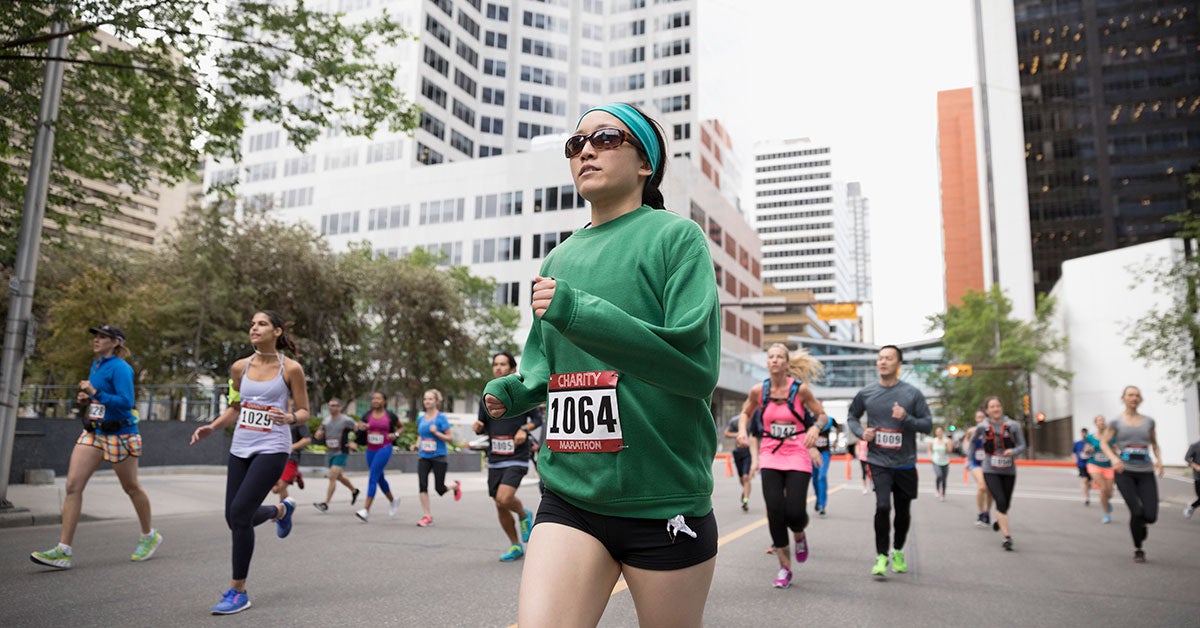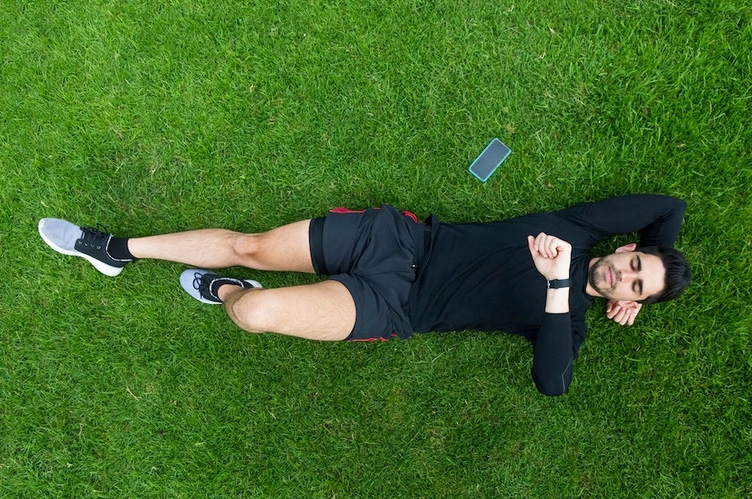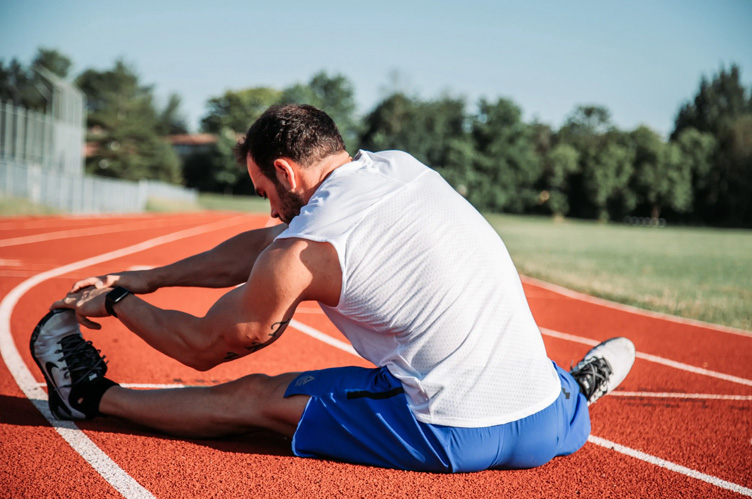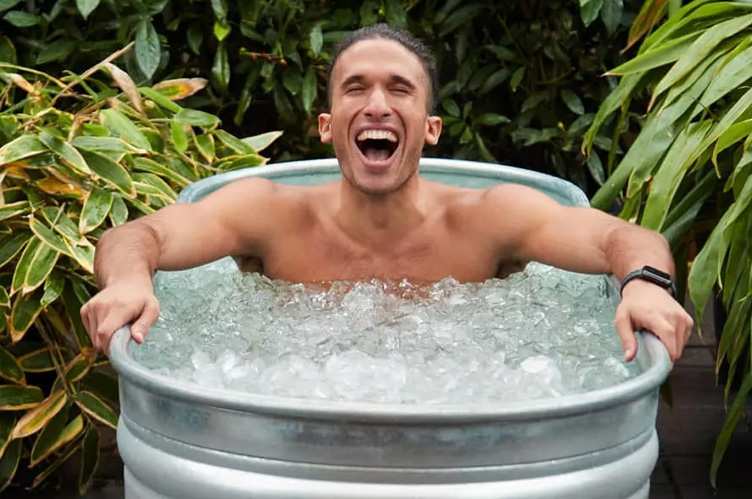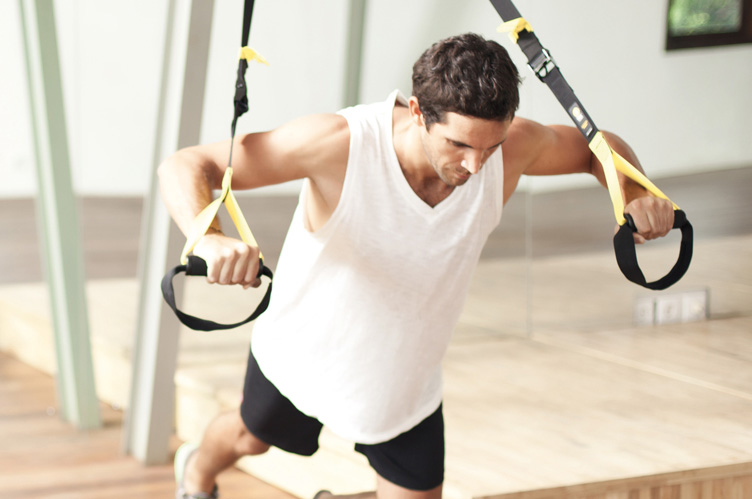┌å┌»┘ł┘å┘ć ž»┘ł█īž»┘å ž▒ž¦ ž┤ž▒┘łž╣ ┌®┘å█ī┘ģž¤
█ī┌®█ī ž¦ž▓ ž▓█īž©ž¦█ī█īŌĆī┘枦█ī ž»┘ł█īž»┘å ž¦█ī┘å ž¦ž│ž¬ ┌®┘ć ž┤ž▒┘łž╣ žó┘å ž©ž│█īž¦ž▒ ž│ž¦ž»┘ć ž¦ž│ž¬. ž©ž¦ █ī┌® ž¼┘üž¬ ┌®┘üž┤ ž»┘ł█īž»┘å ž«┘łž©žī ┘ģ█īŌĆīž¬┘łž¦┘å█īž» ž¦ž▓ ž«ž¦┘å┘ćŌĆīž¬ž¦┘å ž©█īž▒┘ł┘å ž©ž▒┘ł█īž» ┘ł ž┤ž▒┘łž╣ ┌®┘å█īž» ┘ł ž¬┘éž▒█īž©ž¦┘ŗ ž»ž▒ ┘ćž▒ ž│┘å█ī ┘ģ█īŌĆīž¬┘łž¦┘å█īž» žó┘å ž▒ž¦ ž¦┘åž¼ž¦┘ģ ž»┘ć█īž». ž»┘ł█īž»┘å █ī┌® ž▒ž¦┘ć ž╣ž¦┘ä█ī ž©ž▒ž¦█ī ┌®┘ģ┌® ž©┘ć ž©┘ćž©┘łž» ž│┘䞦┘ģž¬ ┘é┘äž©žī ž│┘łž▓ž¦┘åž»┘å ┌®ž¦┘äž▒█ī ┘ł ž¬┘é┘ł█īž¬ ž«┘ä┘é ┘ł ž«┘ł█īžī ž»ž▒ ┌®┘垦ž▒ ┌®┘ä█ī ┘üž¦█īž»┘ć ž»█ī┌»ž▒ ž¦ž│ž¬.
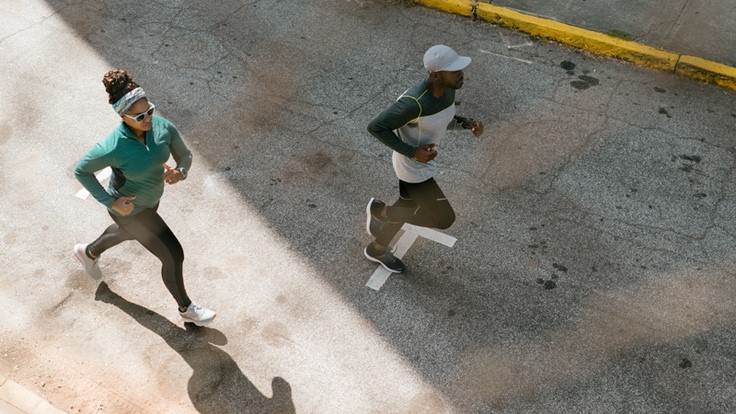
┘éž©┘ä ž¦ž▓ ž┤ž▒┘łž╣ ┘ćž▒ ž¬┘ģž▒█ī┘å ┘łž▒ž▓ž┤█ī ž¼ž»█īž»žī ž©ž¦ ┘Šž▓ž┤┌® ž«┘łž» ┘ģž┤┘łž▒ž¬ ┌®┘å█īž». ž»┘ł█īž»┘å █ī┌® ┘üž╣ž¦┘ä█īž¬ ž©ž»┘å█ī ┘Šž▒ ž┤ž»ž¬ ž¦ž│ž¬ ┌®┘ć ┘ģ█īŌĆīž¬┘łž¦┘åž» ž¦ž│ž¬ž▒ž│ ž▓█īž¦ž»█ī ž▒ž¦ ž©┘ć ž©ž»┘å ž┤┘ģž¦ ┘łž¦ž▒ž» ┌®┘åž». ┘äž░ž¦ ┘ģžĘ┘ģž”┘å ž┤┘ł█īž» ┌®┘ć ┘ģ┘üž¦žĄ┘ä ┘ł ž©ž»┘å ž┤┘ģž¦ ┘ģ█īŌĆīž¬┘łž¦┘å┘åž» žČž▒ž©ž¦ž¬ ┘垦ž┤█ī ž¦ž▓ ž©ž▒ž«┘łž▒ž» ž©┘ć ž▓┘ģ█ī┘å ž▒ž¦ ž¬žŁ┘ģ┘ä ┌®┘å┘åž»žī ž©┘ć ž«žĄ┘łžĄ ž¦┌»ž▒ ž¬ž¦ ┘éž©┘ä ž┤ž▒┘łž╣ žó┘åžī ┌®┘ģ ž¬žŁž▒┌® ž©┘łž»┘ć ž¦█īž» █īž¦ žóž│█īž© ┘ł ž©█ī┘ģž¦ž▒█ī ž«ž¦žĄ█ī ž»ž¦ž▒█īž».
┘Šž│ ž¦ž▓ ž¦┘åž¼ž¦┘ģ ž¦█ī┘å┌®ž¦ž▒žø ┘ģž▒ž¦žŁ┘ä ž┤ž▒┘łž╣ █ī┌® ž▒┘łž¬█ī┘å ž»┘ł█īž»┘åžī ž│ž¦ž»┘ć ž¦ž│ž¬:
- ž©ž¦ ┘Š█īž¦ž»┘ć ž▒┘ł█ī ž┤ž▒┘łž╣ ┌®┘å█īž»: ž¦┌»ž▒ ž¬ž¦ž▓┘ć ┘łž▒ž▓ž┤ ┘ģ█īŌĆī┌®┘å█īž» █īž¦ ┘ģž»ž¬█ī ž¦ž│ž¬ ┌®┘ć ┌®┘ģ ž¬žŁž▒┌® ž©┘łž»┘ćŌĆīž¦█īž»žī ž©┘ć žóž▒ž¦┘ģ█ī ž┤ž▒┘łž╣ ┌®┘å█īž». 3 ž¬ž¦ 5 ž©ž¦ž▒ ž»ž▒ ┘ć┘üž¬┘ć ž©┘ć ┘ģž»ž¬ 30 ž»┘é█ī┘é┘ć ž»ž▒ ž▒┘łž▓ ┘Š█īž¦ž»┘ć ž▒┘ł█ī ž│ž▒█īž╣ ž¦┘åž¼ž¦┘ģ ž»┘ć█īž».
- ┌®┘ģ ┌®┘ģ ž»┘ł█īž»┘å ž▒ž¦ ž©┘ć ┘üž╣ž¦┘ä█īž¬ ž«┘łž» ž¦žČž¦┘ü┘ć ┌®┘å█īž»: ┘Šž│ ž¦ž▓ ┌å┘åž» ┘ć┘üž¬┘ć ┘Š█īž¦ž»┘ć ž▒┘ł█īžī ž©ž¦ž▓┘ćŌĆī┘枦█ī ž▓┘ģž¦┘å█ī ž¦ž▓ ž»┘ł█īž»┘å ž▒ž¦ ž»ž▒ ž¦█ī┘å 30 ž»┘é█ī┘é┘ć ž©┌»┘åž¼ž¦┘å█īž». ž©ž¦ 5 ž»┘é█ī┘é┘ć ┘Š█īž¦ž»┘ć ž▒┘ł█ī ž│ž▒█īž╣ ž©ž»┘å ž«┘łž» ž▒ž¦ ┌»ž▒┘ģ ┌®┘å█īž» ┘ł ž│┘Šž│ ž©┘ć ž¬ž»ž▒█īž¼ ┘Š█īž¦ž»┘ć ž▒┘ł█ī ┘ł ž»┘ł█īž»┘å ž▒ž¦ ž©ž¦ ┘ć┘ģ ┘ģž«┘ä┘łžĘ ┌®┘å█īž». ž│ž╣█ī ┌®┘å█īž» 1 ž»┘é█ī┘é┘ć ž©ž»┘ł█īž»žī 2 ž»┘é█ī┘é┘ć ┘Š█īž¦ž»┘ć ž▒┘ł█ī ┌®┘å█īž» ┘ł ž¦█ī┘å ž│█ī┌®┘ä ž▒ž¦ ž¬┌®ž▒ž¦ž▒ ┌®┘å█īž». ┘ć┘ģž¦┘åžĘ┘łž▒ ┌®┘ć ž»┘ł█īž»┘å ž©ž▒ž¦█īž¬ž¦┘å ž▒ž¦žŁž¬ŌĆīž¬ž▒ ┘ģ█īŌĆīž┤┘łž»žī ž▓┘ģž¦┘å ž¦┘åž¼ž¦┘ģ žó┘å ž▒ž¦ žĘ┘ł┘䞦┘å█īŌĆīž¬ž▒ ┌®┘å█īž».

- ž¦ž©ž¬ž»ž¦ ž▒┘ł█ī ž▓┘ģž¦┘å ž¬┘ģž▒┌®ž▓ ┌®┘å█īž» ┘ł ž©ž╣ž» ž│ž▒ž╣ž¬žī ž¦ž│ž¬┘鞦┘ģž¬ ┘ł ┘ģž│ž¦┘üž¬ ┘Š█ī┘ģ┘łž»┘ć ž┤ž»┘ć ž«┘łž» ž▒ž¦ ž¦┘üž▓ž¦█īž┤ ž»┘ć█īž»: ž»ž▒ ž¦ž©ž¬ž»ž¦ ž©┘ć ž¼ž¦█ī ┘ģž│ž¦┘üž¬žī ž▒┘ł█ī ž¦┘üž▓ž¦█īž┤ ž▓┘ģž¦┘å ž»┘ł█īž»┘å ž«┘łž» ž¬┘ģž▒┌®ž▓ ┌®┘å█īž». ┘ćž»┘ü ž¦█ī┘å ž¦ž│ž¬ ┌®┘ć ž©█īž▒┘ł┘å ž©ž▒┘ł█īž» ┘ł žŁž▒┌®ž¬ ┌®┘å█īž»žī ┘ģ┘ć┘ģ ┘å█īž│ž¬ ┌å┘éž»ž▒ ž│ž▒█īž╣ █īž¦ žó┘ćž│ž¬┘ć ž¦█ī┘å ┌®ž¦ž▒ ž▒ž¦ ž¦┘åž¼ž¦┘ģ ┘ģ█īŌĆīž»┘ć█īž». ┘ć┘å┌»ž¦┘ģ█ī ┌®┘ć ž©ž»┘å ž«┘łž» ž▒ž¦ ž©┘ć žĘ┘łž▒ ┘ģž»ž¦┘ł┘ģ ž©ž▒ž¦█ī █ī┌® ž»┘łž▒┘ć ž▓┘ģž¦┘å█ī žŁž▒┌®ž¬ ž»ž¦ž»█īž»žī ┘ģ█ī ž¬┘łž¦┘å█īž» ž│ž▒ž╣ž¬ ž«┘łž» ž▒ž¦ ž¦┘üž▓ž¦█īž┤ ž»┘ć█īž»žī ┘ģž│ž¦┘üž¬ ┘Š█ī┘ģ┘łž»┘ć ž┤ž»┘ć ž«┘łž» ž▒ž¦ ž¦┘üž▓ž¦█īž┤ ž»┘ć█īž» █īž¦ ž¦ž│ž¬┘鞦┘ģž¬ ž«┘łž» ž▒ž¦ ž¦┘üž▓ž¦█īž┤ ž»┘ć█īž».
ž»┘ł█īž»┘å █ī┌® ┘łž▒ž▓ž┤ ┘üž▒ž»█ī ž¦ž│ž¬ ┌®┘ć ž©ž▒ž¦█ī ┘ćž▒ ┌®ž│█ī ┘ģž¬┘üž¦┘łž¬ ž©┘ć ┘åžĖž▒ ┘ģ█ī ž▒ž│ž». ž¦█ī┘å┌®┘ć ┌å┘åž» ┘ł┘鞬 █ī┌®ž©ž¦ž▒ ┘ģ█īŌĆīž»┘ł█īž»žī ┌å┘ć ┘ģž│ž¦┘üž¬ █īž¦ ┌å┘éž»ž▒ ž│ž▒█īž╣ ž©┘ć ž¦┘å┌»█īž▓┘ć ┘ł ž¦┘ćž»ž¦┘ü ž┤┘ģž¦ ž©ž│ž¬┌»█ī ž»ž¦ž▒ž». ž▒ž│█īž»┘å ž©┘ć ž¬┘垦ž│ž© ž¦┘åž»ž¦┘ģžī žŁ┘üžĖ ž│┘䞦┘ģž¬█īžī ┌»ž│ž¬ž▒ž┤ ž▒┘łž¦ž©žĘ ž¦ž¼ž¬┘ģž¦ž╣█īžī ž«┘łž┤ ┌»ž░ž┤ž¬┘å █īž¦ ┌垦┘äž┤ ┌®ž┤█īž»┘å ž«┘łž» ž©ž▒ž¦█ī ž¦┘ł┘ä█ī┘å 5k █īž¦ ┘å█ī┘ģ┘ć ┘ģž¦ž▒ž¦ž¬┘å ž«┘łž»žī ž»ž¦┘åž│ž¬┘å ž¦┘å┌»█īž▓┘ć ž┤┘ģž¦ ┘ģ█ī ž¬┘łž¦┘åž» ž©┘ć ž¬┘åžĖ█ī┘ģ ž©ž▒┘垦┘ģ┘ć ž»┘ł█īž»┘å ┌®┘ģ┌® ┌®┘åž».
┌®┘üž┤ ┘ģ┘垦ž│ž© ž¬┘ć█ī┘ć ┌®┘å█īž».
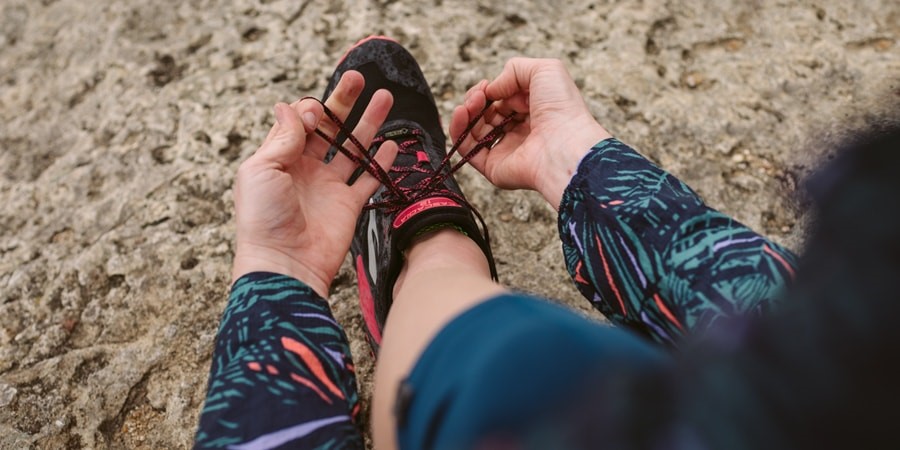
- ž©ž▒ž¦█ī ž┤ž▒┘łž╣ ž»┘ł█īž»┘å ┘å█īž¦ž▓█ī ž©┘ć ž│ž¦ž╣ž¬ŌĆī┘枦█ī ┘ć┘łž┤┘ģ┘åž» ┘üž¦┘垬ž▓█ī █īž¦ ž│ž¦█īž▒ ┘łž│ž¦█ī┘ä ž¦┘ä┌®ž¬ž▒┘ł┘å█ī┌®█ī ┘åž»ž¦ž▒█īž».
ž¦┘ģž¦ ┌å█īž▓█ī ┌®┘ć ž©┘ć žó┘å ┘å█īž¦ž▓ ž»ž¦ž▒█īž» █ī┌® ž¼┘üž¬ ┌®┘üž┤ ž»┘ł█īž»┘å ž¦ž│ž¬ ┌®┘ć ┘ģ┘垦ž│ž© ┘Šž¦█ī ž┤┘ģž¦ ž©ž¦ž┤ž». - ┌®┘üž┤ ┘ģž«žĄ┘łžĄ ž»┘ł█īž»┘å ž«┘łž» ž▒ž¦ ┘Š█īž»ž¦ ┌®┘å█īž»: ž»ž▒ žŁž¦┘ä█ī ┌®┘ć ┌®┘üž┤ŌĆī┘枦█ī ┘ģž«žĄ┘łžĄ ž»┘ł█īž»┘å ž▒ž¦ ┘ģ█īŌĆīž¬┘łž¦┘å ž©ž▒ž¦█ī ┘Š█īž¦ž»┘ćŌĆīž▒┘ł█ī ž¦ž│ž¬┘üž¦ž»┘ć ┌®ž▒ž»žī ┌®┘üž┤ŌĆī┘枦█ī ┘Š█īž¦ž»┘ć ž▒┘ł█ī ž©ž▒ž¦█ī ž»┘ł█īž»┘å ž¦█īž»┘ćŌĆīžó┘ä ┘å█īž│ž¬┘åž». žó┘å┘枦 ž©ž¦┘äž┤ž¬┌® ┘ł žŁ┘ģž¦█īž¬ █ī┌®ž│ž¦┘å█ī ž©ž▒ž¦█ī ┘Šž¦ ┘åž»ž¦ž▒┘åž».
- ┘äž©ž¦ž│ ž▒ž¦žŁž¬ ž©┘Š┘łž┤█īž»: ┌å┘ć ž»ž▒ ž▒┘łž▓┘枦█ī ž│ž▒ž» ┘ł ┌å┘ć ┌»ž▒┘ģ ┘ģ█īŌĆīž»┘ł█īž»žī ┘äž©ž¦ž│ŌĆī┘枦█ī ž▒ž¦žŁž¬ ž©ž▒ž¦█ī ž»┘ł█īž»┘å ž¦┘垬ž«ž¦ž© ┌®┘å█īž» ┌®┘ć ž▒žĘ┘łž©ž¬ (ž╣ž▒┘é) ž▒ž¦ ž¦ž▓ ┘Š┘łž│ž¬ ž┤┘ģž¦ ž»┘łž▒ ┌®ž▒ž»┘ć ┘ł ž┤┘ģž¦ ž▒ž¦ ž«ž┤┌® ┘å┌»┘ć ž»ž¦ž▒ž».
- █ī┌® ┘å█ī┘ģ ž¬┘å┘ć ┘łž▒ž▓ž┤█ī ┘ģ┘垦ž│ž© ┘Š█īž»ž¦ ┌®┘å█īž»: ž¦ž▓ žó┘åž¼ž¦█ī█ī ┌®┘ć ž»┘ł█īž»┘å ┘łž▒ž▓ž┤█ī ┘Šž▒ ž┤ž»ž¬ ž¦ž│ž¬žī █ī┌® ┘å█ī┘ģ ž¬┘å┘ć ┘łž▒ž▓ž┤█ī ž«┘łž© ┘ģ█īŌĆīž¬┘łž¦┘åž» ž©┘ć ┘ģžŁž»┘łž» ┌®ž▒ž»┘å žŁž▒┌®ž¬ ž│█ī┘å┘ć ┌®┘ģ┌® ┌®┘åž» ┌®┘ć ┘ģž¦┘åž╣ ž»ž▒ž»žī ž│ž¦█ī█īž»┌»█ī █īž¦ ┘垦ž▒ž¦žŁž¬█īŌĆī┘枦█ī ž»█ī┌»ž▒ ž┤┘łž».
- žóž©ž▒ž│ž¦┘å█ī ž▒ž¦ ž¼ž»█ī ž©┌»█īž▒█īž»: ž¦█ī┘å ┘ģ┘ć┘ģ ž¦ž│ž¬ ┌®┘ć ┘ć█īž»ž▒ž¦ž¬┘ć ž©┘ģž¦┘å█īž» ž¬ž¦ ž¦žŁž│ž¦ž│ ž«┘łž©█ī ž»ž▒ ž»┘ł█īž»┘å ž»ž¦ž┤ž¬┘ć ž©ž¦ž┤█īž». ┘ģ┘ģ┌®┘å ž¦ž│ž¬ ž©ž¬┘łž¦┘å█īž» ž»┘ł█īž»┘å ┘枦█ī 45 ž»┘é█ī┘é┘ć █īž¦ ┌®┘ģž¬ž▒ ž▒ž¦ ž©ž»┘ł┘å ┘å┘łž┤█īž»┘å žóž© ž¦┘åž¼ž¦┘ģ ž»┘ć█īž»žī ž¦┘ģž¦ ž©ž│█īž¦ž▒█ī ž¦ž▓ ž»┘ł┘åž»┌»ž¦┘å žĄž▒┘ü ┘åžĖž▒ ž¦ž▓ ┘ģž»ž¬ ž▓┘ģž¦┘å ž»┘ł█īž»┘åžī žóž© ž▒ž¦ žŁ┘ģ┘ä ┘ģ█īŌĆī┌®┘å┘åž» ┘ł ┘ģ█īŌĆī┘å┘łž┤┘åž». ž©ž▒ž«█ī ž©žĘž▒█īŌĆī┘枦█ī žóž© ž»ž│ž¬█ī ž▒ž¦ ž»┘łž│ž¬ ž»ž¦ž▒┘åž»žī ž©ž▒ž«█ī ž»█ī┌»ž▒ ┌®┘ł┘ä┘ć žóž©ž▒ž│ž¦┘å█ī ž▒ž¦ ž¬ž▒ž¼█īžŁ ┘ģ█īŌĆīž»┘ć┘åž». ž©ž▒ž¦█ī ž»┘ł█īž»┘å ž©█īž┤ž¬ž▒ ž¦ž▓ 45 ž»┘é█ī┘é┘ć ž┤┘ģž¦ ┘å█īž¦ž▓ ž©┘ć ž¦┘ä┌®ž¬ž▒┘ł┘ä█īž¬ ┘łž▒ž▓ž┤█ī ┘ć┘ģž▒ž¦┘ć žóž© ž»ž¦ž▒█īž».
- ž¦┌»ž▒ ┘ģ█īŌĆīž«┘łž¦┘ć█īž» ┘ä┘łž¦ž▓┘ģ ž¼ž¦┘åž©█ī ž»┘ł█īž»┘å ž©ž«ž▒█īž»: ┘䞦ž▓┘ģ ┘å█īž│ž¬ ž¦ž▓ ┘ć┘ģž¦┘å ž¦ž©ž¬ž»ž¦ ┌®┘ć ž»┘ł█īž»┘å ž▒ž¦ ž┤ž▒┘łž╣ ┘ģ█īŌĆī┌®┘å█īž» ž©ž▒ž¦█ī ┘łž│ž¦█ī┘ä ž¦┘ä┌®ž¬ž▒┘ł┘å█ī┌®█ī █īž¦ ž¼ž¦┘åž©█ī ┘ćž▓█ī┘å┘ć ┌®┘å█īž». ž©ž╣ž»┘枦 ┌®┘ć ž©ž«┘łž¦┘ć█īž» ┘ģž│ž¦┘üž¬ŌĆī┘枦 █īž¦ žČž▒ž©ž¦┘å ┘é┘äž© ž«┘łž» ž▒ž¦ ž▒ž»█īž¦ž©█ī ┌®┘å█īž»žī ž│ž¦ž╣ž¬ ┘ć┘łž┤┘ģ┘åž» █īž¦ ┘ģž¦┘å█īž¬┘łž▒ žČž▒ž©ž¦┘å ┘é┘äž© ž▒ž¦ ┘ģ█īŌĆīž¬┘łž¦┘å█īž» ž¬┘ć█ī┘ć ┌®┘å█īž».
ž¦žĄ┘ł┘ä ž»┘ł█īž»┘å: ž│┘łž¦┘䞦ž¬ ┘ģž¬ž»ž¦┘ł┘ä
┘䞦ž▓┘ģ ┘å█īž│ž¬ ž»ž▒ ┘ģ┘łž▒ž» ┘åžŁ┘ł┘ć ž»┘ł█īž»┘å ž«┘łž» ž▓█īž¦ž» ┘ü┌®ž▒ ┌®┘å█īž»žī ž¦┘ģž¦ ┌å┘åž» ┘å┌®ž¬┘ć ž»ž▒ ┘ģ┘łž▒ž» ┘üž▒┘ģ ž»┘ł█īž»┘åžī ž│ž▒ž╣ž¬ ┘ł ž¬┘å┘üž│ ┘ģ█ī ž¬┘łž¦┘åž» ž©┘ć ž┤┘ģž¦ ┌®┘ģ┌® ┌®┘åž» ž»┘ł┘åž»┘ć ┌®ž¦ž▒žó┘ģž»ž¬ž▒█ī ž©ž¦ž┤█īž».
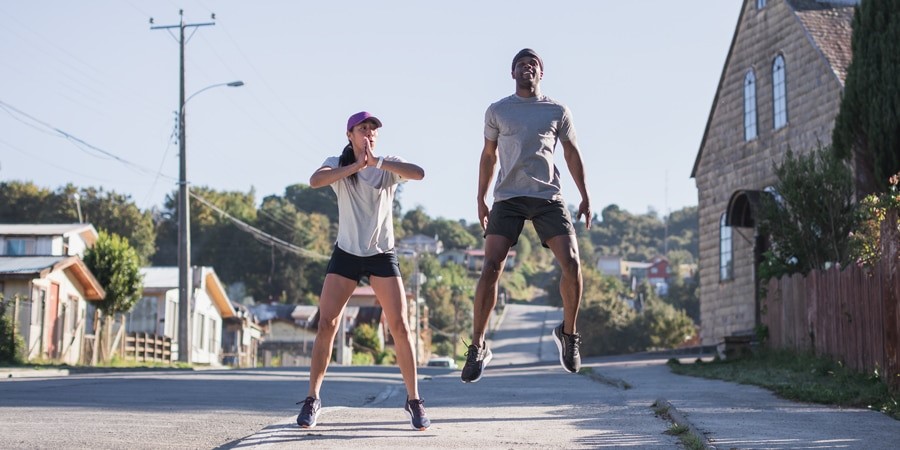
┌å┌»┘ł┘å┘ć ž©ž¦█īž» ┌»ž▒┘ģ ┌®┘å┘ģž¤
ž©ž▒ž¦█ī 5 ž¬ž¦ 10 ž»┘é█ī┘é┘ć ┌»ž▒┘ģ ┌®ž▒ž»┘å ž▓┘ģž¦┘å ž©┌»ž░ž¦ž▒█īž» ž¬ž¦ ž«┘ł┘å ž┤┘ģž¦ ž©┘ć ┌»ž▒ž»ž┤ ž»ž▒ žó█īž»žī ž¦┌®ž│█ī┌ś┘å ž¼ž▒█īž¦┘å █īž¦ž©ž» ┘ł ž©ž»┘垬ž¦┘å ž©█īž»ž¦ž▒ ž┤┘łž». ┌®ž┤ž┤ ┘枦█ī ┘Š┘ł█īž¦ ž▒ž¦ ž»ž▒ ž¼ž¦█ī█ī ┌®┘ć ž╣žČ┘䞦ž¬ ž«┘łž» ž▒ž¦ ž¦ž▓ žĘž▒█ī┘é žŁž▒┌®ž¬ ┌»ž▒┘ģ ┘ģ█ī ┌®┘å█īž» ž¦┘åž¼ž¦┘ģ ž»┘ć█īž»: ž©ž▒ž«█ī ž¦ž▓ ┘å┘ģ┘ł┘å┘ć ┘枦 ž╣ž©ž¦ž▒ž¬┘åž» ž¦ž▓ ┘Šž▒┘łž¦┘å┘ćžī ž▓ž¦┘å┘ł ž©┘ä┘åž»žī žČž▒ž©┘ć ž©┘ć ┘Šž┤ž¬ (butt kicks) ┘ł ┌åž▒ž«ž┤ ┘Šž¦.
┘ł┘鞬█ī ž»ž▒ žŁž¦┘ä ž»┘ł█īž»┘å ┘ćž│ž¬┘ģ ┌å┘ć ž¦žŁž│ž¦ž│█ī ž©ž¦█īž» ž»ž¦ž┤ž¬┘ć ž©ž¦ž┤┘ģž¤
ž©┘ć ž╣┘å┘łž¦┘å █ī┌® ┘ģž©ž¬ž»█īžī ┘ģ┘ģ┌®┘å ž¦ž│ž¬ ┘ć┘å┌»ž¦┘ģ ž┤ž▒┘łž╣ ž»┘ł█īž»┘å ┌®┘ģ█ī ž¦žŁž│ž¦ž│ ┘垦ž▒ž¦žŁž¬█ī ┌®┘å█īž»žī ž¦┘ģž¦ ž¦┌»ž▒ ž¦žŁž│ž¦ž│ ž»ž▒ž» ┘ģ█īŌĆī┌®┘å█īž»žī ž©ž¦█īž» ž©ž¦█īž│ž¬█īž» ┘ł ž©ž¦ ┘Šž▓ž┤┌® ž«┘łž» ┘ģž┤┘łž▒ž¬ ┌®┘å█īž».
ž©ž¦ ┌å┘ć ž│ž▒ž╣ž¬█ī ž©ž¦█īž» ž©ž»┘ł┘ģž¤
ž│ž╣█ī ┌®┘å█īž» ž©ž¦ ┘ć┘ģ ž¬█ī┘ģ█ī ž»┘ł┘åž»┘ć ž«┘łž» ┌»┘üž¬┌»┘ł ┌®┘å█īž». ž¦┌»ž▒ ┘å┘ģ█ī ž¬┘łž¦┘å█īž» ž▒ž¦žŁž¬ žĄžŁž©ž¬ ┌®┘å█īž»žī ž│ž▒ž╣ž¬ ž«┘łž» ž▒ž¦ ┌®┘ģ ┌®┘å█īž». ž¦┌»ž▒ ž¬┘å┘枦 ┘ģ█īŌĆīž»┘ł█īž»žī ž│ž╣█ī ┌®┘å█īž» ž©ž¦ žĄž»ž¦█ī ž©┘ä┘åž» ž©ž¦ ž«┘łž»ž¬ž¦┘å žĄžŁž©ž¬ ┌®┘å█īž» ┘ł ┘ģžĘ┘ģž”┘å ž┤┘ł█īž» ┌®┘ć ┘ģ█ī ž¬┘łž¦┘å█īž» ž¦█ī┘å ┌®ž¦ž▒ ž▒ž¦ ž▒ž¦žŁž¬ ž¦┘åž¼ž¦┘ģ ž»┘ć█īž».
ž©ž▒ž¦█ī ┘ģžĘ┘äž╣ ž┤ž»┘å ž¦ž▓ ┘å┌®ž¦ž¬ ž»┘ł█īž»┘åžī ž¦█ī┘åž│ž¬┌»ž▒ž¦┘ģ ž▒ž¦┘å█ī┘å┌» ┌®┘䞦ž© ž¬┘ćž▒ž¦┘å ž▒ž¦ ž»┘åž©ž¦┘ä ┌®┘å█īž»:
┌å┌»┘ł┘å┘ć ┘ć┘å┌»ž¦┘ģ ž»┘ł█īž»┘å ┘å┘üž│ ž©┌®ž┤┘ģž¤
ž¬┘å┘üž│ ž┤┘ģž¦ ž©ž«ž┤ ┘ģ┘ć┘ģ█ī ž¦ž▓ ž»┘ł█īž»┘å ž┤┘ģž¦ ž¦ž│ž¬ ┘ł ž©┘ć ž▒ž│ž¦┘åž»┘å ž¦┌®ž│█ī┌ś┘å ž©┘ć ž╣žČ┘䞦ž¬ ┌®┘ģ┌® ┘ģ█īŌĆī┌®┘åž». ž©ž▒ž«█ī ž¦ž▓ ž¦┘üž▒ž¦ž» ž¦ž▓ žĘž▒█ī┘é ž©█ī┘å█īžī ž©ž▒ž«█ī ž¦ž▓ žĘž▒█ī┘é ž»┘枦┘å ┘ł ž©ž▒ž«█ī ž»█ī┌»ž▒ ž¬ž▒┌®█īž©█ī ž¦ž▓ ┘ćž▒ ž»┘ł ž▒ž¦ ž¦┘åž¼ž¦┘ģ ┘ģ█īŌĆīž»┘ć┘åž». ž¬┌®┘å█ī┌® ┘枦█ī ┘ģž«ž¬┘ä┘ü ž¬┘å┘üž│ ž▒ž¦ ž¦┘ģž¬žŁž¦┘å ┌®┘å█īž» ž¬ž¦ ž©ž©█ī┘å█īž» ┌®ž»ž¦┘ģ█ī┌® ž©ž▒ž¦█ī ž┤┘ģž¦ ž©┘枬ž▒ ž╣┘ģ┘ä ┘ģ█īŌĆī┌®┘åž».
ž»ž▒ ž¦█ī┘åž¼ž¦ ž»┘ł ž¦┘ä┌»┘ł█ī ž¬┘å┘üž│█ī ž▒ž¦█īž¼ ┘łž¼┘łž» ž»ž¦ž▒ž»:
- ž¦ž▓ ž¦┘ä┌»┘ł█ī 2-2 ž¦ž│ž¬┘üž¦ž»┘ć ┌®┘å█īž»: ž©ž▒ž¦█ī ž»┘ł ┘ģž▒žŁ┘ä┘ć (┌»ž¦┘ģ) ┘å┘üž│ ž╣┘ģ█ī┘é ž©┌®ž┤█īž» (žČž▒ž©┘ć ┘Šž¦) ┘ł ž»┘ł ┘ģž▒žŁ┘ä┘ć(┌»ž¦┘ģ) ž¦ž▓ žĘž▒█ī┘é ž»┘枦┘å ┘å┘üž│ ž«┘łž» ž▒ž¦ ž©█īž▒┘ł┘å ž»┘ć█īž». ž¦ž▓ žĘž▒█ī┘é ž©█ī┘å█ī ┘å┘üž│ ž©┌®ž┤█īž»žī ž¦ž▓ žĘž▒█ī┘é ž»┘枦┘å ž©ž¦ž▓ž»┘ģ ┌®┘å█īž».
- ž¦ž▓ ž¦┘ä┌»┘ł█ī 3-1 ž¦ž│ž¬┘üž¦ž»┘ć ┌®┘å█īž»: ž│┘ć ┘ģž▒žŁ┘ä┘ć(┌»ž¦┘ģ) ┘å┘üž│ ž©┌®ž┤█īž» ┘ł ž»ž▒ █ī┌® ┘ģž▒žŁ┘ä┘ć(┌»ž¦┘ģ) ž©ž¦ž▓ž»┘ģ ┌®┘å█īž».
┘üž▒┘ģ ž»┘ł█īž»┘å ┘ģ┘垦ž│ž© ┌å█īž│ž¬ž¤
┘üž▒┘ģ ž»┘ł█īž»┘å ž«┘łž© ┘ģ█ī ž¬┘łž¦┘åž» ž©┘ć ž┤┘ģž¦ ┌®┘ģ┌® ┌®┘åž» ž»┘ł┘åž»┘ć ┌®ž¦ž▒žó┘ģž»ž¬ž▒█ī ž┤┘ł█īž» ┘ł ž¦ž▓ žóž│█īž© ž»█īž»┌»█ī ž¼┘ä┘ł┌»█īž▒█ī ┌®┘å█īž». ž»ž▒ ž¦█ī┘åž¼ž¦ ┌å┘åž» ┘å┌®ž¬┘ć ž│ž▒█īž╣ ž©ž▒ž¦█ī ž┤ž▒┘łž╣ ž©┘ć ž┤┘ģž¦ ┘ģ█īŌĆī┌»┘ł█ī█ī┘ģ:
- ž©ž¦ž▓┘ł┘枦: ž©ž¦ž▓┘ł┘枦 ┘ģž½┘ä ┘Šž¦┘枦 ┘éž»ž▒ž¬ ž┤┘ģž¦ ┘ćž│ž¬┘åž». ž¦ž¼ž¦ž▓┘ć ž»┘ć█īž» ž©ž¦ž▓┘ł┘枦█īž¬ž¦┘å ž©┘ć žĘ┘łž▒ žĘž©█īž╣█ī ┘ł ž©ž¦ ž▓ž¦┘ł█ī┘ć 90 ž»ž▒ž¼┘ć žóž▒ž¦┘ģ ž©┌åž▒ž«┘åž». ž┤ž¦┘å┘ć ┘枦█īž¬ž¦┘å ž▒ž¦ ┘ć┘ģ ž┤┘ä ┌®┘å█īž». ž¦ž▓ žŁž▒┌®ž¬ ┘ģž¬┘鞦žĘž╣ ž»ž│ž¬ ┘枦 ž¦ž¼ž¬┘垦ž© ┌®┘å█īž». ž¦ž¼ž¦ž▓┘ć ┘åž»┘ć█īž» ž»ž│ž¬ ┘枦█īž¬ž¦┘å ž¦ž▓ ž«žĘ ┘ģž▒┌®ž▓█ī ž©ž»┘垬ž¦┘å ž╣ž©┘łž▒ ┌®┘åž». ž¦█ī┘å ž©┘ć žŁ┘üžĖ ž¦┘åž▒┌ś█ī ┌®┘ģ┌® ┘ģ█ī ┌®┘åž».
- ┘Šž¦┘枦: ┘Šž¦█ī ž«┘łž» ž▒ž¦ ž»ž▒ ┘ģž▒┌®ž▓ ┘ł ┘ģž│ž¬┘é█ī┘ģž¦┘ŗ ž▓█īž▒ ž©ž»┘垬ž¦┘å ┘üž▒┘łž» ž©█īž¦┘łž▒█īž».
- ž©ž»┘å: ž©ž¦┘䞦ž¬┘å┘ć ž«┘łž» ž▒ž¦ žĄž¦┘ü ┘ł ž»ž▒ ž╣█ī┘å žŁž¦┘ä žóž▒ž¦┘ģ ┘å┌»┘ć ž»ž¦ž▒█īž». ž»ž▒ žŁ█ī┘å ž»┘ł█īž»┘å ┌®┘ģ█ī ž©┘ć ž¼┘ä┘ł ž«┘ģ ž┤┘ł█īž» ž¬ž¦ žŁž▒┌®ž¬ ž©┘枬ž▒█ī ž»ž¦ž┤ž¬┘ć ž©ž¦ž┤█īž». ž¦ž▓ ┘é┘łž▓ ┌®ž▒ž»┘å █īž¦ ž«┘ģ ž┤ž»┘å ž¦ž▓ ž©ž¦ž│┘å ž«┘łž»ž»ž¦ž▒█ī ┌®┘å█īž».
ž©┘枬ž▒█ī┘å ž▒ž¦┘ć ž©ž▒ž¦█ī ž«┘å┌® ž┤ž»┘å ┌å█īž│ž¬ž¤
ž▓┘ģž¦┘å█ī ž▒ž¦ ž©ž▒ž¦█ī ┌®ž¦┘ćž┤ ž¬ž»ž▒█īž¼█ī žČž▒ž©ž¦┘å ┘é┘äž© ž«┘łž» ž©┘ć ž¼ž¦█ī ž¬┘ł┘é┘ü ┘垦┌»┘枦┘å█ī ž¦ž«ž¬žĄž¦žĄ ž»┘ć█īž». ž┤┘ģž¦ ┘ģ█ī ž«┘łž¦┘ć█īž» ž©ž»┘å ž«┘łž» ž▒ž¦ žóž▒ž¦┘ģ ┌®┘å█īž» ┘ł ž©┘ć žó┘å ž©┌»┘ł█ī█īž» ┌®┘ć ž▓┘ģž¦┘å ž¦ž│ž¬ž▒ž¦žŁž¬ ┘üž▒ž¦ ž▒ž│█īž»┘ć ž¦ž│ž¬. ž©ž│ž¬┘ć ž©┘ć ž│žĘžŁ ž¬┘䞦ž┤ ž┤┘ģž¦ ┘ģž¬┘üž¦┘łž¬ ž¦ž│ž¬. ž¦┌»ž▒ ž»ž▒ žŁž¦┘ä ž»┘ł█īž»┘å ┘ćž│ž¬█īž»žī ž│ž▒ž╣ž¬ ž«┘łž» ž▒ž¦ ž©┘ć žóž▒ž¦┘ģ█ī žó┘ćž│ž¬┘ć ┘Šž¦█ī█ī┘å ž©█īž¦┘łž▒█īž» █īž¦ ┘Š█īž¦ž»┘ć ž▒┘ł█ī ┌®┘å█īž». ž¦┌»ž▒ ž»ž▒ žŁž¦┘ä ž▒ž¦┘ć ž▒┘üž¬┘å ┘ćž│ž¬█īž»žī žŁž▒┌®ž¦ž¬ ┌®ž┤ž┤█ī žó┘ćž│ž¬┘ć ┘ģž¦┘å┘åž» 20 ž¬ž¦ 30 ž½ž¦┘å█ī┘ć ┘䞦┘å┌ś ž¦┘åž¼ž¦┘ģ ž»┘ć█īž».

ž©┘枬ž▒█ī┘å ┘ģ┌®ž¦┘å ž©ž▒ž¦█ī ž»┘ł█īž»┘å ┌®ž¼ž¦ž│ž¬ž¤
ž¼ž¦█ī█ī ž▒ž¦ ┘Š█īž»ž¦ ┌®┘å█īž» ┌®┘ć ž©┘ć ž┤┘ģž¦ ┘üž▒žĄž¬ ž»┘ł█īž»┘å ┘ģž»ž¦┘ł┘ģ ž▒ž¦ ž©ž»┘ćž» ┘ł ž¦ž▓ ž¦┘åž¼ž¦┘ģ žó┘å ┘äž░ž¬ ž©ž©ž▒█īž». ž©┘ć ┘ģ┘åžĖ┘łž▒ ž¬ž©ž»█ī┘ä ž┤ž»┘å ž©┘ć █ī┌® ž»┘ł┘åž»┘ć žŁž▒┘ü┘ćŌĆīž¦█īŌĆīž¬ž▒žī ž»ž▒ ┘å┘枦█īž¬ ž│ž╣█ī ┌®┘å█īž» ž│žĘžŁ ž»┘ł█īž»┘å ž«┘łž» ž▒ž¦ ž¬ž║█ī█īž▒ ž»┘ć█īž». ž¬ž▒┌®█īž©█ī ž¦ž▓ ž«█īž¦ž©ž¦┘åŌĆī┘枦žī ┘Š█īž¦ž»┘ć ž▒┘ł┘枦žī ž¬ž▒ž»┘ģ█ī┘ä ┘枦žī ┘ģž│█īž▒┘枦žī ┌å┘ģ┘åŌĆī┘枦žī ž¼ž¦ž»┘ć ┘枦█ī ž«ž¦┌®█ī ┘ł ž║█īž▒┘ć ž▒ž¦ ž¦┘ģž¬žŁž¦┘å ┌®┘å█īž».
┌å┘åž» ┘ł┘鞬 █ī┌®ž©ž¦ž▒ ž©ž¦█īž» ž©ž»┘ł┘ģž¤
ž©┘ć ž¼ž¦█ī ž│ž▒ž╣ž¬ █īž¦ ┘ģž│ž¦┘üž¬žī ž¬ž»ž¦┘ł┘ģ ž▒ž¦ ┘ćž»┘ü ┘éž▒ž¦ž▒ ž»┘ć█īž». █ī┌® ž©ž▒┘垦┘ģ┘ć ┘ć┘üž¬┌»█ī ž»┘ł█īž»┘å ž©ž▒ž¦█ī ž¦█īž¼ž¦ž» ž╣ž¦ž»ž¬ ┘łž▒ž▓ž┤ ž¬┘åžĖ█ī┘ģ ┌®┘å█īž».
┌å┌»┘ł┘å┘ć ž©ž¦ ž¦┘å┌»█īž▓┘ć ž©┘ģž¦┘å█ī┘ģž¤
ž©ž▒┘垦┘ģ┘ć ž»ž¦ž┤ž¬┘ć ž©ž¦ž┤█īž»: ž©ž▒ž¦█ī ž»┘ł█īž»┘å ž«┘łž» ž©ž▒┘垦┘ģ┘ć ž▒█īž▓█ī ┌®┘å█īž». žó┘å ž▒ž¦ ž»ž▒ ž¬┘é┘ł█ī┘ģ ž¬ž¦┘å ž»ž▒ž¼ ┌®┘å█īž». ž©ž▒ž¦█ī ž¦┘åž¼ž¦┘ģ žó┘å ž¦ž│ž¬┘ģž▒ž¦ž▒ ž»ž¦ž┤ž¬┘ć ž©ž¦ž┤█īž». ž¦┌»ž▒ ž¬┘å┘枦 ž▓┘ģž¦┘å█ī ┌®┘ć ž»ž¦ž▒█īž» ┘ł┘鞬 ┘垦┘枦ž▒ ž©ž¦ž┤ž» █īž¦ ž▓┘ģž¦┘å ┘éž©┘ä ž¦ž▓ ┌®ž¦ž▒ █īž¦ ┘ģž»ž▒ž│┘ć ž©┘枬ž▒█ī┘å ž¦ž│ž¬žī ž©ž▒ž¦█ī žó┘å ž©ž▒┘垦┘ģ┘ć ž▒█īž▓█ī ┌®┘å█īž». ž»ž▒ žĄ┘łž▒ž¬ ┘å█īž¦ž▓ ž▓┘å┌» ┘ćž┤ž»ž¦ž▒ ž¬┘åžĖ█ī┘ģ ┌®┘å█īž».
ž©┘ć ž©ž»┘å ž«┘łž» ┌»┘łž┤ ž»┘ć█īž»: ž¦┌»ž▒ █ī┌® ž▒┘łž▓ žŁ┘łžĄ┘ä┘ć ž»┘ł█īž»┘å ┘åž»ž¦ž▒█īž»žī ž¦ž┤┌®ž¦┘ä█ī ┘åž»ž¦ž▒ž». ┘ģ┘ģ┌®┘å ž¦ž│ž¬ ┘åž┤ž¦┘å┘ć ž¦█ī┘å ž©ž¦ž┤ž» ┌®┘ć ž┤┘ģž¦ ┘ł ž©ž»┘垬ž¦┘å ž©┘ć ž¦ž│ž¬ž▒ž¦žŁž¬ ┘å█īž¦ž▓ ž»ž¦ž▒█īž».
┘äž©ž¦ž│ ž©┘Š┘łž┤█īž»: ┌»ž¦┘ć█ī ž¦┘ł┘鞦ž¬ ž│ž«ž¬ ž¬ž▒█ī┘å ┘éž│┘ģž¬ ž¦█īž¼ž¦ž» ž¦┘å┌»█īž▓┘ć ž©ž▒ž¦█ī ž©█īž▒┘ł┘å ž▒┘üž¬┘å ž¦ž▓ ž»ž▒ ž¦ž│ž¬. ž©ž▒ž¦█ī ž»┘ł█īž»┘å ┘äž©ž¦ž│ ž©┘Š┘łž┤█īž» ž¬ž¦ ž©┘枦┘å┘ć ž¦█ī ž©ž▒ž¦█ī ž¦┘åž¼ž¦┘ģ ┘åž»ž¦ž»┘å žó┘å ┘åž»ž¦ž┤ž¬┘ć ž©ž¦ž┤█īž». ┘ćž▒ ž▒┘łž▓ ┌®┘ć ┘鞥ž» ž»┘ł█īž»┘å ž▒ž¦ ž»ž¦ž▒█īž» ┘łž│ž¦█ī┘ä ž»┘ł█īž»┘å ž«┘łž» ž▒ž¦ ┌®┘垦ž▒ ž©┌»ž░ž¦ž▒█īž» █īž¦ ž©ž│ž¬┘ć ž©┘åž»█ī ┌®┘å█īž» ž¬ž¦ ┘ć┘ģ█īž┤┘ć ž©ž▒ž¦█ī žó┘å žó┘ģž¦ž»┘ć ž©ž¦ž┤█īž».
10 ┘å┌®ž¬┘ćŌĆī█ī žŁ┘üžĖ ž¦┘å┌»█īž▓┘ć ž©ž▒ž¦█ī ž»┘ł█īž»┘å ž▒ž¦ ž¦ž▓ ž¦█ī┘åž¼ž¦ ž©ž«┘łž¦┘å█īž».
┘ćž»┘ü ž«┘łž» ž▒ž¦ ž©ž»ž¦┘å█īž»: ž«┘łž¦┘ć ž¦█ī┘å ┘ćž»┘ü žŁ┘üžĖ ž│┘䞦┘ģž¬█ī ž©┘ć ž»┘ä█ī┘ä ┘üž┤ž¦ž▒ ž«┘ł┘å ž©ž¦┘䞦 ž©ž¦ž┤ž» █īž¦ ž©┘ć ž¦█ī┘å ž»┘ä█ī┘ä ┌®┘ć ž©ž▒ž¦█ī █ī┌® ┘ģž│ž¦ž©┘é┘ć ž»┘ł█īž»┘å 10k ž©ž▒ž¦█ī ž│┘ć ┘ģž¦┘ć ž½ž©ž¬ ┘垦┘ģ ┌®ž▒ž»┘ć ž¦█īž». ž©┘ć ž«┘łž» █īž¦ž»žó┘łž▒█ī ┌®┘å█īž» ┌®┘ć ž¬┘䞦ž┤ ž¦┘ģž▒┘łž▓ ž»ž▒ ž»ž▒ž¦ž▓┘ģž»ž¬ ž»ž│ž¬ž¦┘łž▒ž»█ī ž©ž▓ž▒┌»ž¬ž▒ ž«┘łž¦┘ćž» ž©┘łž».
ž©ž¦ ž»┘łž│ž¬ž¦┘å ž«┘łž» ž©ž»┘ł█īž»: ┘ł┘鞬█ī ┌®ž│█ī ┘ģ┘垬žĖž▒ ž┤┘ģž¦ž│ž¬žī ž│ž«ž¬ŌĆīž¬ž▒ ž¦ž│ž¬ ┌®┘ć ž¦ž▓ ž»┘ł█īž»┘å ┘ģ┘åžĄž▒┘ü ž┤┘ł█īž». ž©┘ć ž╣┘䞦┘ł┘ćžī ┘ģ█ī ž¬┘łž¦┘å█īž» ž©┘ć █ī┌®ž»█ī┌»ž▒ ž¦┘å┌»█īž▓┘ć ž»┘ć█īž».
ž©ž▒ž¦█ī ┘Š█ī┘łž│ž¬┘å ž©┘ć ž©ž▓ž▒┌»ž¬ž▒█ī┘å ž▒ž¦┘å█ī┘å┌» ┌®┘䞦ž© ž¦█īž▒ž¦┘åžī ž▒┘ł█ī ž¦█ī┘å ┘ä█ī┘å┌® ž©ž▓┘å█īž»:
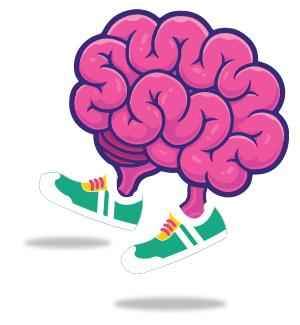
ž©┘ć █ī┌® ┌®┘䞦ž© ž»┘ł█īž»┘å ž©┘Š█ī┘ł┘åž»█īž»: ž¦ž▓ ž│ž¦█īž▒ ž»┘ł┘åž»┌»ž¦┘å ž¦┘å┌»█īž▓┘ć ┘ģ█ī┌»█īž▒█īž». ž©┘ć █ī┌® ž¬█ī┘ģ ž»┘ł█īž»┘å ┘ģžŁ┘ä█ī ž©┘Š█ī┘ł┘åž»█īž» ┘ł ž©ž¦ ž»┘łž│ž¬ž¦┘å ž»█ī┌»ž▒█ī ┌®┘ć ž»ž▒ žó┘å ž¬█ī┘ģ ž»┘ł┘åž»┘ć ž┤ž»┘ć ž¦┘åž» ž¦ž▒ž¬ž©ž¦žĘ ž©ž▒┘éž▒ž¦ž▒ ┌®ž▒ž»┘ć ┘ł žĄžŁž©ž¬ ┌®┘å█īž».
ž©ž▒ž¦█ī █ī┌® ┘ģž│ž¦ž©┘é┘ć ž½ž©ž¬ ┘垦┘ģ ┌®┘å█īž»: ž▓┘ģž¦┘å█ī ┌®┘ć ž©┘ć žĘ┘łž▒ ┘ģ┘åžĖ┘ģ ž»ž▒ žŁž¦┘ä ž»┘ł█īž»┘å ┘ćž│ž¬█īž»žī ┘ģ┘ģ┌®┘å ž¦ž│ž¬ ž©┘ć ┘ü┌®ž▒ ž┤ž▒┌®ž¬ ž»ž▒ █ī┌® ┘ģž│ž¦ž©┘é┘ć ž¼ž¦ž»┘ć ž¦█ī ž©ž¦ž┤█īž». žó┘å┘枦 ž¦ž║┘äž© “ž»┘ł┘枦█ī ž│ž▒┌»ž▒┘ģ ┌®┘å┘åž»┘ć” ┘垦┘ģ█īž»┘ć ┘ģ█ī ž┤┘ł┘åž» ž▓█īž▒ž¦ ž©█īž┤ž¬ž▒ ž»┘ł┘åž»┌»ž¦┘å ž©ž▒ž¦█ī ž▒┘鞦ž©ž¬ ž¼ž»█ī ┘łž¦ž▒ž» žó┘å┘枦 ┘å┘ģ█ī ž┤┘ł┘åž».
┘üž¦ž▒ž║ ž¦ž▓ ž│žĘžŁ ž▒┘鞦ž©ž¬ ž┤┘ģž¦žī ž¬┘ģž▒█ī┘å ž▒ž¦ ž©ž▒ž¦█ī █ī┌® ┘ģž│ž¦ž©┘é┘ć ž¦┘åž¼ž¦┘ģ ž»┘ć█īž». žŁž¬█ī ž¦┌»ž▒ ┘ćž»┘ü ž┤┘ģž¦ žĄž▒┘üž¦┘ŗ ž¬┘ģž¦┘ģ ┌®ž▒ž»┘å žó┘å ┘ģž│ž¦┘üž¬ ž©ž¦ž┤ž». ┘ģž│ž¦┘üž¬ ┘ģž│ž¦ž©┘é┘ć ┘ćž▒ ┌å┘ć ž©ž¦ž┤ž» – 5Kžī 10Kžī ┘å█ī┘ģ┘ć ┘ģž¦ž▒ž¦ž¬┘å █īž¦ █ī┌® ┘ģž¦ž▒ž¦ž¬┘å ┌®ž¦┘ģ┘ä. ┌å┘åž»█ī┘å ┘ģž¦┘ć ┘éž©┘ä ž¦ž▓ ┘ģž│ž¦ž©┘é┘ć ž«┘łž» ┘ćž»┘ü ž¬┘ģž▒█ī┘å█ī ž«┘łž» ž▒ž¦ ž¬ž╣█ī█ī┘å ┌®┘å█īž».
┘Š█īž┤ž▒┘üž¬ ž«┘łž» ž▒ž¦ ž½ž©ž¬ ┌®┘å█īž»: ┘åž▒┘ģ ž¦┘üž▓ž¦ž▒┘枦 █īž¦ ž│ž¦█īž▒ ž©ž▒┘垦┘ģ┘ć ┘Šž¦█īž┤ ž»┘ł█īž»┘åžī ┘Šž¦█īž┤ ┘Š█īž┤ž▒┘üž¬ ž▒ž¦ ž©ž▒ž¦█ī ž┤┘ģž¦ žóž│ž¦┘å ┘ģ█īŌĆī┌®┘åž» ┘ł ž©┘ć ž┤┘ģž¦ ┌®┘ģ┌® ┘ģ█īŌĆī┌®┘åž» ž¬ž¦ ž¦ž▓ ž»ž│ž¬ž¦┘łž▒ž»┘枦█ī ž«┘łž» ž¦žŁž│ž¦ž│ ž«┘łž©█ī ž»ž¦ž┤ž¬┘ć ž©ž¦ž┤█īž».

┌å┌»┘ł┘å┘ć ž¦ž│ž¬┘鞦┘ģž¬ ž¦█īž¼ž¦ž» ┌®┘å█ī┘ģ
┘ć┘å┌»ž¦┘ģ█ī ┌®┘ć ┘ģ┘枦ž▒ž¬ ┘枦█ī ž¦┘ł┘ä█ī┘ć ž»┘ł█īž»┘å ž▒ž¦ ž©┘ć ž»ž│ž¬ žó┘łž▒ž»█īž»žī ž┤ž▒┘łž╣ ž©┘ć ž╣ž¦ž»ž¬ ž»ž¦ž»┘å ž©ž»┘å ž«┘łž» ž©┘ć ž»┘ł█īž»┘å ž©ž▒ž¦█ī ┘ģž»ž¬ ž▓┘ģž¦┘å žĘ┘ł┘䞦┘å█ī ┌®┘å█īž». ž¬ž¦┌®█īž» ž»ž▒ ž¦█ī┘å ┘ģž▒žŁ┘ä┘ć ž¬┘ģž▒█ī┘垦ž¬ ┘Šž¦█ī┘ćžī ┘ģž│ž¦┘üž¬ ž¦ž│ž¬ ┘å┘ć ž│ž▒ž╣ž¬.
ž»┘ł█īž»┘å ž«█ī┘ä█ī ž│ž▒█īž╣ ┘ł ž«█ī┘ä█ī ž▓┘łž» ┘ģ█ī ž¬┘łž¦┘åž» ž┤┘ģž¦ ž▒ž¦ ž¦ž▓ ┘åžĖž▒ ž¼ž│┘ģ█ī ┘ł ž▒┘łžŁ█ī ž«ž│ž¬┘ć ┌®┘åž» ┘ł ž┤┘ģž¦ ž▒ž¦ ┘ģž│ž¬ž╣ž» žóž│█īž© ž»█īž»┌»█ī ┌®┘åž».
┘ģž│ž¦┘üž¬ŌĆī┘枦█ī ž«┘łž» ž▒ž¦ ž©┘ć žóž▒ž¦┘ģ█ī ž¦┘üž▓ž¦█īž┤ ž»┘ć█īž»: ž©ž▒ž«█ī ž¦ž▓ ž»┘ł┘åž»┌»ž¦┘å ž¬┘łžĄ█ī┘ć ┘ģ█ī ┌®┘å┘åž» ┘ģž│ž¦┘üž¬ ┘Š█ī┘ģ┘łž»┘ć ž┤ž»┘ć ┘ł ž┤ž»ž¬ ž«┘łž» ž▒ž¦ žŁž»ž¦┌®ž½ž▒ ž¬ž¦ 10 ž»ž▒žĄž» ž»ž▒ ┘ć┘üž¬┘ć ž¦┘üž▓ž¦█īž┤ ž»┘ć█īž» ž¬ž¦ ž¦ž▓ žóž│█īž© ┘枦█ī ┘垦ž┤█ī ž¦ž▓ ž©█īž┤ ž¬┘ģž▒█ī┘å█ī ž¼┘ä┘ł┌»█īž▒█ī ž┤┘łž». ž¦┌»ž▒ ž»ž▒ ┘łž▒ž▓ž┤ ┘ł ž»┘ł█īž»┘å ž¬ž¦ž▓┘ć ┌®ž¦ž▒ ┘ćž│ž¬█īž»žī ┘ģ┘ģ┌®┘å ž¦ž│ž¬ ž©ž«┘łž¦┘ć█īž» ž©ž¦ ž¦┘üž▓ž¦█īž┤ 5 ž»ž▒žĄž»█ī ž»ž▒ ┘ć┘üž¬┘ć ž┤ž▒┘łž╣ ┌®┘å█īž». ┘ģž½┘䞦 ž¦┌»ž▒ žŁž¼┘ģ ┘ć┘üž¬┌»█ī ž¬┘ģž▒█ī┘å ž┤┘ģž¦ ž»ž▒ ž¦█ī┘å ┘ć┘üž¬┘ć 10 ┌®█ī┘ä┘ł┘ģž¬ž▒ ž¦ž│ž¬ ž©ž¦ 5 ž»ž▒žĄž» ž¦┘üž▓ž¦█īž┤ ž»ž▒ ┘ć┘üž¬┘ć ž©ž╣ž» ┘ģ█ī ž¬┘łž¦┘å█īž» 10.5 ┌®█ī┘ä┘ł┘ģž¬ž▒ ž©ž»┘ł█īž» ┘ł ž©ž¦ 10 ž»ž▒žĄž» ž¦┘üž▓ž¦█īž┤žī 11 ┌®█ī┘ä┘ł┘ģž¬ž▒ ž©ž»┘ł█īž».
┌®ž▒ž¦ž│ ž¬ž▒█ī┘å█ī┘å┌»: ┘üž╣ž¦┘ä█īž¬█ī ž║█īž▒ ž¦ž▓ ž»┘ł█īž»┘å ž¦┘åž¼ž¦┘ģ ž»┘ć█īž» ž¬ž¦ ž©┘ć ┘Šž¦┘枦 ┘ł ┘ģž¦┘ć█ī┌å┘ć ┘枦█ī ž»ž▒┌»█īž▒ ž»ž▒ ž»┘ł█īž»┘å ž¦ž│ž¬ž▒ž¦žŁž¬ ž»┘ć█īž». ž»┘ł┌åž▒ž«┘ć ž│┘łž¦ž▒█īžī ž┤┘垦žī ž▒┘鞥žī ž¦ž│┌®█ī žĄžŁž▒ž¦█ī█ī ┘ģ█ī ž¬┘łž¦┘åž» ž©┘ć ž┤┘ģž¦ ž»ž▒ ž¼┘ä┘ł┌»█īž▒█ī ž¦ž▓ žóž│█īž© ┌®┘ģ┌® ┌®┘åž». ž¦ž│ž¬┘üž¦ž»┘ć ž¦ž▓ ž¬┘ģž▒█ī┘垦ž¬ ┘ģž¬┘鞦žĘž╣ ž»ž▒ ┌å┘åž» ┘ć┘üž¬┘ć ž¦ž©ž¬ž»ž¦█ī█ī ž»┘ł█īž»┘åžī ž▓┘ģž¦┘å█ī ┌®┘ć ž»ž▒ ž¬┘䞦ž┤ ž©ž▒ž¦█ī ž¦█īž¼ž¦ž» █ī┌® ┘Šž¦█ī┘ć ž»┘ł█īž»┘å ┘ćž│ž¬█īž»žī ž¦┘ć┘ģ█īž¬ ┌®┘ģž¬ž▒█ī ž»ž¦ž▒ž». ┘ć┘å┌»ž¦┘ģ█ī ┌®┘ć ┘Šž¦█ī┘ć ž»┘ł█īž»┘å ž▒ž¦ ž¦█īž¼ž¦ž» ┌®ž▒ž»█īž» ┘ł ┘ģž│ž¦┘üž¬ ┘Š█ī┘ģ┘łž»┘ć ž┤ž»┘ć ž▒ž¦ ž¦┘üž▓ž¦█īž┤ ž»ž¦ž»█īž»žī ž¬┘ģž▒█ī┘垦ž¬ ┘ģž¬┘鞦žĘž╣ ž«┘łž» ž▒ž¦ ž¦┘üž▓ž¦█īž┤ ž»┘ć█īž».

ž¬┘ģž▒█ī┘垦ž¬ ┘éž»ž▒ž¬█ī: ž¬┘ģž▒█ī┘垦ž¬ ┘éž»ž▒ž¬█ī ž▒ž¦ ž©ž▒ž¦█ī ž©┘ćž©┘łž» ┌®ž¦ž▒ž¦█ī█ī ┘ł ž╣┘ģ┘ä┌®ž▒ž» ┌®┘ä█ī ž«┘łž» ž»ž▒ ž©ž▒┘垦┘ģ┘ć ž©┌»┘åž¼ž¦┘å█īž». ž▒ž¦┘ćŌĆī┘枦█ī ž▓█īž¦ž»█ī ž©ž▒ž¦█ī ž¬┘ģž▒█ī┘å ┘éž»ž▒ž¬█ī ┘łž¼┘łž» ž»ž¦ž▒ž»žī ž¼ž»ž¦ ž¦ž▓ ┘łž▓┘å┘ćŌĆīž©ž▒ž»ž¦ž▒█ī █īž¦ ž¦ž│ž¬┘üž¦ž»┘ć ž¦ž▓ ž»ž│ž¬┌»ž¦┘ćŌĆī┘枦█ī ┘łž▓┘å┘ćŌĆīž©ž▒ž»ž¦ž▒█ī ž»ž▒ ž©ž¦ž┤┌»ž¦┘ć. ž¬┘ģž▒█ī┘垦ž¬ ž│ž¦ž»┘ć ž¦█ī ┘łž¼┘łž» ž»ž¦ž▒ž» ┌®┘ć ┘ģ█ī ž¬┘łž¦┘å█īž» ž»ž▒ ž«ž¦┘å┘ć ž¦┘åž¼ž¦┘ģ ž»┘ć█īž» ž¬ž¦ ┘ģž¦┘ć█ī┌å┘ć ┘枦█ī█ī ž▒ž¦ ┌®┘ć ž©█īž┤ž¬ž▒ ž»ž▒ ┘ć┘å┌»ž¦┘ģ ž»┘ł█īž»┘å ž¦ž▓ žó┘å┘枦 ž¦ž│ž¬┘üž¦ž»┘ć ┘ģ█ī ┌®┘å█īž»žī ž¬┘é┘ł█īž¬ ┌®┘å█īž».
ž¦ž│ž¬ž▒ž¦žŁž¬ ┘ł ž▒█ī┌®ž¦┘łž▒█ī: ┘ć┘ģž¦┘åžĘ┘łž▒ ┌®┘ć ┘ģž│ž¦┘üž¬ ┘Š█ī┘ģ┘łž»┘ć ž┤ž»┘ć ž▒ž¦ ž¦┘üž▓ž¦█īž┤ ┘ģ█īŌĆīž»┘ć█īž»žī ž©ž»┘å ž┤┘ģž¦ ž©ž▒ž¦█ī ž©ž¦ž▓█īž¦ž©█ī ž©┘ć ž▒┘łž▓┘枦█ī ž¦ž│ž¬ž▒ž¦žŁž¬ ┘ł ž▓┘ģž¦┘å ┘å█īž¦ž▓ ž»ž¦ž▒ž». ┘ł┘鞬█ī ┘ģž▒žŁ┘ä┘ć ┘Š█īž¦ž»┘ć ž▒┘ł█ī/ž»┘ł█īž»┘å ž▒ž¦ ┘Šž┤ž¬ ž│ž▒ ┌»ž░ž¦ž┤ž¬█īž»žī ┬½ž▒┘łž▓┘枦█ī žĘ┘ł┘䞦┘å█ī/ž▒┘łž▓┘枦█ī ┌®┘łž¬ž¦┘ć┬╗ ž▒ž¦ ž┤ž▒┘łž╣ ┌®┘å█īž». ž©┘ć ž╣┘å┘łž¦┘å ┘ģž½ž¦┘äžī ž¦┌»ž▒ █ī┌® ž▒┘łž▓ 6 ┌®█ī┘ä┘ł┘ģž¬ž▒ ┘ģ█ī ž»┘ł█īž»žī ž▒┘łž▓ ž©ž╣ž» ┘ü┘éžĘ 3 ┌®█ī┘ä┘ł┘ģž¬ž▒ ž©ž»┘ł█īž».
┘ģ┘åž©ž╣: https://www.rei.com
|


